Are you seeking one-on-one college counseling and/or essay support? Limited spots are now available. Click here to learn more.

AP Lit Reading List – 50 Best Books to Read
November 16, 2023

The AP English Literature and Composition exam is made up of two sections: a multiple-choice section and a free-response section. Firstly, in the multiple-choice section, students answer questions pertaining to passages of fiction, drama, or poetry. Next, in the free-response section, students analyze poetry and prose and write an argumentative essay centered on a text of their own choice or chosen from a list of 40 literary works. The problem for students preparing for the test is that there is no official AP lit reading list. Oedipus, Lady Macbeth, Madame Bovary, Mrs. Dalloway, Scout Finch , Huck Finn—all of them, plus hundreds more plucked from the pages of the literary canon, are liable to pop up on the AP Lit exam. That’s daunting.
So how exactly does one prep for this test, especially given the fact that there’s no authoritative AP Lit reading list to consult? Also, if a student wants to write their argumentative essay on a book not named on the test, how are they supposed to know which books are AP exam-worthy?
Luckily, by taking a look at AP Lit exams of years past, we can get a sense of which works are likelier than others to make an appearance. And we can get a sense for what the College Board considers exam-worthy. In other words: relax—you don’t have to slog through the entire oeuvres of Tolstoy, Dostoyevsky, Pushkin et al. Below, I’ve compiled a totally unofficial AP Lit reading list—the 50 books that appeared most frequently on the exam since 1971.
AP Lit Reading List
1) invisible man – ralph ellison.
Ralph Ellison’s classic kicks off this unofficial AP Lit reading list. If my count is correct, it’s appeared on the AP Lit exam 28 times. And that sounds about right: I don’t think any scholar of literature—American or otherwise—would raise an eyebrow if you argued that Invisible Man is the most important American novel of the 20th century. Published in 1952, Invisible Man is a deep dive into the mind of its unnamed narrator, a Black man coming to terms with his identity in a white society that refuses to see him. I’ll always be thankful that my 11th-grade American Lit teacher assigned this book. It’s mesmerizing, violent, honest, devastating, cathartic…it wouldn’t be very difficult to keep the list of superlatives going.
2) Wuthering Heights – Emily Brontë
As you go about preparing for the AP Lit exam, it’s probably productive to keep the following question(s) in mind: why has such-and-such book come up on the test so often? In other words: what makes such-and-such book a classic? It’s not an easy question to answer. And I find that to be especially true here, thinking about Wuthering Heights . Is it considered a classic today because it’s an early example of psychological realism? Because of its depiction of abuse ? Because it bucked the Victorian status quo?
The answer to all three of those questions is probably a decisive “yes, and…” What’s fascinating to me about Wuthering Heights is how emotionally turbulent the story is—and how emotionally turbulent it can be for the reader, too. Finally, Wuthering Heights has appeared on the AP Lit exam 23 times in total, making it the second most cited book in the test’s history.
3) Great Expectations – Charles Dickens
Great Expectations has appeared on the AP Lit exam 20 times. Whenever I hear the word “Dickensian,” I don’t think of Oliver Twist or David Copperfield ; I think of Pip Pirrip, Miss Havisham and co. Great Expectations is the ultimate Dickensian drama: romance, social class, 19th century London, good versus evil—it’s all there. Additionally, two other Dickens epics are amongst the top 50 most cited books on the AP Lit exam: Bleak House and A Tale of Two Cities have appeared 5 times each.
4) Heart of Darkness – Joseph Conrad
Drawing inspiration from his experience working for a Belgian trading company in what is now the Democratic Republic of the Congo, Joseph Conrad’s Heart of Darkness is an exploration of the hypocrisies and horrors of imperialism. The novella has been on the AP Lit exam 18 times, and for good reason—the story asks important questions about morality, power, and racial subjugation, and the book itself can be critiqued for how it objectifies and exoticizes Africans.
5) Jane Eyre – Charlotte Brontë
Jane Eyre, the eldest Brontë sister’s classic, has made the AP Lit exam 18 times. It’s a first-person-narrated Bildungsroman in which the reader gets access to the rich inner world of the book’s eponymous narrator. We witness Jane’s moral and spiritual development, her transition from childhood to adulthood, and her budding romance with Mr. Rochester. Further, the psychological intimacy of the prose has made Jane Eyre an enduring classic.
AP Lit Reading List (Continued)
6) king lear – william shakespeare.
Having appeared on the AP Lit exam 17 times, King Lear is the Shakespeare work most well represented on the test to date. The tragedy is set into motion when King Lear decides to split his kingdom among his three daughters and in the process disowns his youngest, Cordelia. Concurrently, the play deals with themes of betrayal, self-deception, justice, and nihilism.
King Lear is a great place to start if you want to make sure you’ve got at least one of your Shakespeare bases covered. But, let’s be real, it’d probably behoove AP Lit test takers to have read a few more of the Bard’s greatest hits. Othello has been on the test 10 times; The Tempest , 7 times; The Merchant of Venice , 6; Hamlet and Macbeth , 5 times each.
7) Crime and Punishment – Fyodor Dostoyevsky
Hey, it’s one of those Russian tomes I mentioned in the intro! Crime and Punishment has made the test 17 times, so if you’ve got to choose amongst the masterworks of the Russian heavy hitters, it’s not a bad bet. Published in 1866, Crime and Punishment is the inner monologue of a moral dilemma: Raskolnikov rationalizes his way to murder and then has to deal with the consequences—both legal and psychic.
8) Moby Dick – Herman Melville
I’ll admit it: I haven’t read Moby Dick . I’ve tried, but I’ve never been able to get beyond the first 50 or so pages. It’s dense and difficult and requires a serious investment of mental energy. But I’ve never doubted that it’s worth it, and I still like to think that someday I’ll clear my schedule for a week or two and finish the thing once and for all. As much as I cringe at the label, it is one of those Great American Novels. In other words: the story of American literature is much more than Moby Dick , but you can’t tell the story of American literature without Ishmael, Ahab, and that elusive whale.
So what can readers get out of it? It’s a meditation on America. But it’s also a meditation on narrative, on how stories can be told, on style, language, allusion, symbolism, and much more. Moby Dick has been on the AP Lit exam a total of 15 times.
9) A Portrait of the Artist as a Young Man – James Joyce
The Joyce work that in some ways is the prelude to Ulysses and Finnegans Wake , A Portrait of the Artist as a Young Man is the story of Joyce’s fictional alter ego Stephen Dedalus and his struggle against prevailing Catholic and Irish conventions. It’s appeared on the AP Lit exam 14 times. Consequently, this should make it a fixture of any AP Lit reading list. Further, it’s a great example of a Künstlerroman , a story about an artist’s maturation.
10) Adventures of Huckleberry Finn – Mark Twain
Twain’s 1884 classic has appeared on the AP Lit exam 14 times and is frequently cited as one of those aforementioned Great American Novels. Why? For starters, it was one of the first examples of American Literature to be written in a slangy, regional vernacular. It’s also full of humor, and it often satirizes the antebellum South and American racism in general. But that’s not to say that Huckleberry Finn doesn’t come without baggage. Even though Huck Finn and the attitude of the book can be read as anti-racist, Twain’s use of racial stereotypes and epithets is worth questioning and criticizing.
11) Catch-22 – Joseph Heller
Catch-22 , coming in at 14 appearances on the AP Lit exam, might be my personal favorite on this entire list. It’s known as a brutal satire of the American WWII war effort. And it certainly is a satire—a masterful satire. The caricature, the wordplay, the paradox—at a certain point in reading Catch-22 , you just have to sit back and admire Heller’s virtuosity. But the book isn’t reducible to Heller’s chops. In fact, his command of humor makes his depiction of war—the horrors of war—that much more devastating.
12) Their Eyes Were Watching God – Zora Neale Hurston
Their Eyes Were Watching God is a classic and influential love story published in 1937. Of course, it’s much more than a love story—it’s an exploration of gender roles, the enduring effects of racism, and, above all, it’s the story of protagonist Janie Crawford’s search for her own voice and identity. In terms of how to see the novel within the context of American literature, it’s often cited as a classic of the Harlem Renaissance and African-American Literature. And while it is important to see it as a part of those lineages, Their Eyes Were Watching God is just as much a candidate for being the Great American Novel as is Moby Dick or Huck Finn . Lastly, it’s appeared on the AP Lit exam 13 times.
13) The Scarlet Letter – Nathaniel Hawthorne (13 appearances)
14) The Awakening – Kate Chopin (12)
15) The Great Gatsby – F. Scott Fitzgerald (12)
16) Billy Budd – Herman Melville (11)
17) Ceremony – Leslie Marmon Silko (11)
18) Light in August – William Faulkner (11)
19) Antigone – Sophocles (10)
20) As I Lay Dying – William Faulkner (10)
21) Beloved – Toni Morrison (10)
22) The Color Purple – Alice Walker (10)
23) The Glass Menagerie – Tennessee Williams (10)
24) Native Son – Richard Wright (10)
25) Othello – William Shakespeare (10)
26) A Streetcar Named Desire – Tennessee Williams (10)
27) Death of a Salesman – Arthur Miller (9)
28) A Passage to India – E.M. Forster (9)
29) A Raisin in the Sun – Lorraine Hansberry (9)
30) All the Pretty Horses – Cormac McCarthy (8)
31) Anna Karenina – Leo Tolstoy (8)
32) Bless Me, Ultima – Rudolfo Anaya (8)
33) Candide – Voltaire (8)
34) The Crucible – Arthur Miller (8)
35) The Grapes of Wrath – John Steinbeck (8)
36) Jude the Obscure – Thomas Hardy (8)
37) The Jungle – Upton Sinclair (8)
38) Portrait of a Lady – Henry James (8)
39) Rosencrantz and Guildenstern Are Dead – Tom Stoppard (8)
40) Sula – Toni Morrison (8)
41) Waiting for Godot – Samuel Beckett (8)
42) Pride and Prejudice – Jane Austen (7 )
43) Madame Bovary Gustave Flaubert (7)
44) The Sun Also Rises – Ernest Hemingway (7)
45) Things Fall Apart – Chinua Achebe (7)
46) Age of Innocence – Edith Wharton (6)
47) Frankenstein – Mary Shelley (5)
48) The Cherry Orchard – Anton Chekhov (5)
49) Go Tell It on the Mountain – James Baldwin (5)
50) Wise Blood – Flannery O’Connor (5)
AP Reading List – Additional Resources
In conclusion, if you are looking for additional high school literature resources, we invite you to visit the High School Success section of the College Transitions blog. Additionally, some relevant blogs that you may find interesting include:
- The Great Gatsby Themes & Analysis
- Great Gatsby Quotes about the American Dream
- Great Gatsby Quotes and Analysis
- High School Success

Dane Gebauer
Dane Gebauer is a writer and teacher living in Miami, FL. He received his MFA in fiction from Columbia University, and his writing has appeared in Complex Magazine and Sinking City Review .
- 2-Year Colleges
- Application Strategies
- Best Colleges by Major
- Best Colleges by State
- Big Picture
- Career & Personality Assessment
- College Essay
- College Search/Knowledge
- College Success
- Costs & Financial Aid
- Dental School Admissions
- Extracurricular Activities
- Graduate School Admissions
- High Schools
- Law School Admissions
- Medical School Admissions
- Navigating the Admissions Process
- Online Learning
- Private High School Spotlight
- Summer Program Spotlight
- Summer Programs
- Test Prep Provider Spotlight

“Innovative and invaluable…use this book as your college lifeline.”
— Lynn O'Shaughnessy
Nationally Recognized College Expert
College Admissions Counseling
- One-on-One Expert College Admissions Counseling & Essay Coaching.
- Our data-driven program helps you identify good-fit schools & maximize your admission prospects. AND you’ll have a team of experts by your side every step of the way.
- Want to learn more?
Submit a Consultation Request
- Craft and Criticism
- Fiction and Poetry
- News and Culture
- Lit Hub Radio
- Reading Lists

- Literary Criticism
- Craft and Advice
- In Conversation
- On Translation
- Short Story
- From the Novel
- Bookstores and Libraries
- Film and TV
- Art and Photography
- Freeman’s
- The Virtual Book Channel
- Behind the Mic
- Beyond the Page
- The Cosmic Library
- The Critic and Her Publics
- Emergence Magazine
- Fiction/Non/Fiction
- First Draft: A Dialogue on Writing
- The History of Literature
- I’m a Writer But
- Lit Century
- Tor Presents: Voyage Into Genre
- Windham-Campbell Prizes Podcast
- Write-minded
- The Best of the Decade
- Best Reviewed Books
- BookMarks Daily Giveaway
- The Daily Thrill
- CrimeReads Daily Giveaway

The Memoir in Essays: A Reading List
Elizabeth kadetsky on the multiple ways we can look at the self.
While the personal essay has enjoyed continued popularity, a book-length collection of linked essays, centered on an author’s self or life, is less common than a traditional memoir or novel. A truly successful essay collection can reveal the author processing experiences at many different points in time and through many different lenses. As a writer, I’ve always been drawn to the essay as a form, for its concision, for its ability to highlight an intriguing gap between author and narrator that lends an inherent tension and self-questioning. A collection of essays treating the same or related inquiries multiplies this effect.
The distance afforded by those multivalent lenses can allow an author to regard one’s younger self as a different character, a different persona. This can create an unease or uncertainty that is exciting, and also very relatable to the reader. An author’s ability to forgive that earlier version of herself is especially prevalent in the memoir-in-essays, perhaps because of the extended time period covered as a writer composes essays across years or even decades.
We are lucky enough to be in the middle of a renaissance. Several recent and upcoming memoirs-in-essays use the inquisitive essay form to tell life stories from different vantage points and make the reader question and revel in unreliable narrators and new perspectives. The more traditional memoir focuses on seeking and attaining redemption. The nonlinear structure of an essay collection reveals that there is never easy redemption, never clear resolution: bad things happen for no reason; overcoming one trial does not lessen the need to adapt in the next.
These new, enchanting and powerful collections are a welcome reminder that in our collective state of unrest and unknown futures, there is a comfort in knowing that there is an inherent uncertainty in having the answers.
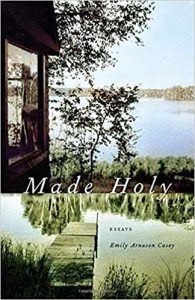
Emily Arnason Casey, Made Holy: Essays (University of Georgia Press)
In beautiful, scenic prose, Emily Arnason Casey probes her middle American childhood from the stance of different venues, times of life, and primary characters—a family cabin and repository for memories both happy and sad; a little sister who grew up and wasn’t a sidekick anymore; a mother who didn’t reveal the family propensity to alcoholism until it was too late; an aunt who succumbed to the illness’s lure. In a spiral-like structure that keeps returning to a central and unanswerable question—how, and why, must this family battle the draws and effects of alcohol addiction—Arnason Casey tells a poignant story of a “normal” family that through its quirks and desires must find a path to survival. The author finds solace in nostalgia and a way forward by examining the errors of the past and by embracing, as a mother, the promise of the future generation. Her probing and compulsive need to question reminds us that alcoholism has no simple etiology, and that its cures are as individual as they are elusive.
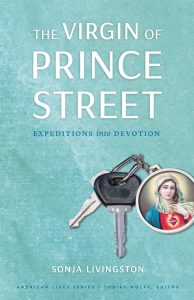
Sonja Livingston, The Virgin of Prince Street: Expeditions into Devotion } (University of Nebraska Press)
At a time of dwindling religiosity, Livingston finds herself wishing for greater connection to her Catholic roots while also exploring the physical space of the church in upstate New York that made memories for her as a child. Because of religious attrition, the church that she grew up in becomes the gathering space for dozens of rescued saint statues deaccessioned from other churches nearby. Livingston embarks upon a quest to find a missing Virgin Mary statue, that moves not in straight lines but elliptically, following a parallel physical and emotional journey that is an exploration into faith, Catholicism, and a desire for spiritual connection on modern terms. In examining the sustained power of a central icon of the Catholic church and an object of personal, sentimental attachment, Livingston’s linked essays highlight the irresolvable paradox of modern religiosity—that the seeker must follow an uncharted middle pathway when the old texts and their tropes, their patriarchy and their strictures, necessarily fall away.
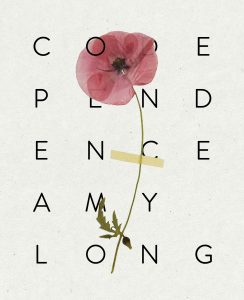
Amy Long, Codependence (Cleveland State University Poetry Center)
In this haunting and troubling book, Long revisits scenes and anecdotes from her boyfriend’s heroin addiction and her subsequent dependence on opioids for chronic pain. Formal experiments such as essays disguised as lists, prescription forms, and medical reports are interspersed among scene-driven recollections from different points in time: the author’s first introduction to the drug; the allure of an older addict; attempts at recovery. The grounding presence of the author’s supportive mother is offset by the narrative’s tragic other constant—the euphoria and escape offered by the drug. By eschewing a linear narrative structure, Long illustrates the difficulty of achieving recovery and puts lie to the myth that addiction is a logical disease that naturally ends with a cure. In its very form, this memoir undermines the narrative so prevalent in media treatments of this illness—that in order to trounce the beast, the individual suffering from addiction need only attend a recovery program. Having written about and witnessed my own sister’s decades’ long struggle to overcome opioid addiction, I was drawn to Long’s wisdom in portraying addiction not as a problem to be solved so much as a complexity to be observed and penetrated.
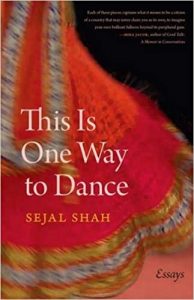
Sejal Shah, This Is One Way to Dance (University of Georgia Press)
The Indian-American author continually revisits her troubled relationship to her American identity through layered essays treating her bifurcated Indian and American past. Exploring her family’s immersion in Gujarati subculture when she was a child growing up in Rochester, New York; her experience as one of few people of color in her MFA creative writing program; and many family weddings in which she must confront her presumed future as a desi bride, Shah questions her place in both American culture and the thriving American-Gujarati subculture. By placing dates at the ends of the essays, it is suggested that her complicated and lifelong conflicts about race and cultural identity can be told chronologically. But, as she explains in her introduction, many essays had multiple end dates after having been revised and reconsidered as time moved forward. The multiple end dates elegantly upend the notion that a rational, hypothesis-thesis-synthesis structure can encompass the complexities of identity and belonging. Shah’s choice to write non-narratively about her conflicts of identity provide insight for anyone raised with a dual or multiple cultural identity—anyone who may, at different points of time, feel a greater allegiance to one culture, another, or a never straightforward amalgam of many. Who we understand ourselves to be, Shah’s book tells the reader in subtle ways, is not a fact so much as a moving target, an unending query.
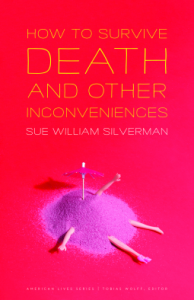
Sue William Silverman, How to Survive Death and Other Inconveniences (University of Nebraska Press)
Silverman is the author of three previous memoirs. In How to Survive Death and Other Inconveniences , she tells her life story through the lens of an obsession with death and the desire to come to terms with the inevitable but often avoided reality that in the end we are mortal. The essays begin with a chronological life story of growing up in New Jersey and encountering American culture’s death-avoidance, but then take a swerve when several brief but elusive mentions accrue into an account of a rape at a young age and a discovery that her memory of the event connects to her fixation on death. A chronological structure gives way to a thematic plot, in which Silverman seeks to confront her topic through reporting, immersion, and reflection—for instance by visiting a morgue, exploring mythological figures associated with death, and recollecting a family funeral. The sophisticated writing and structure make the whole greater than the sum of its many fascinating and worthy parts. Silverman’s essays continually reveal the irrational functioning of memory and how it connects our pasts to our worldviews. Honoring subconscious logic, How to Survive Death and Other Inconveniences makes the gambit that the mysteries of the self are both keys to understanding and uncertainties to be celebrated. We become who we are without being fully conscious of our choices—probing those choices won’t give us easy answers, but the discoveries along the way will be illuminating and well worth the necessary befuddlements.
__________________________________
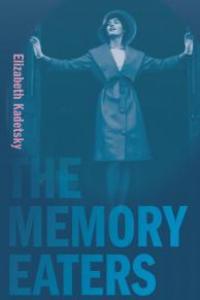
Elizabeth Kadetsky’s memoir , The Memory Eaters, is available now from University of Massachusetts Press.
- Share on Facebook (Opens in new window)
- Click to share on Twitter (Opens in new window)
- Click to share on Google+ (Opens in new window)
- Click to share on LinkedIn (Opens in new window)
- Click to share on Reddit (Opens in new window)
- Click to share on Tumblr (Opens in new window)
- Click to share on Pinterest (Opens in new window)
- Click to share on Pocket (Opens in new window)
Elizabeth Kadetsky
Previous article, next article, support lit hub..

Join our community of readers.
to the Lithub Daily
Popular posts.
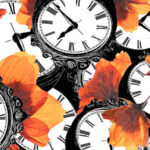
Follow us on Twitter
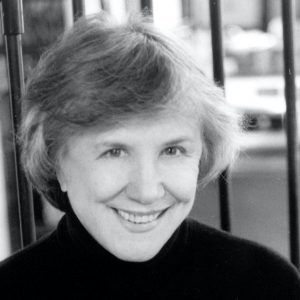
Remembering Deirdre Bair
- RSS - Posts
Literary Hub
Created by Grove Atlantic and Electric Literature
Sign Up For Our Newsletters
How to Pitch Lit Hub
Advertisers: Contact Us
Privacy Policy
Support Lit Hub - Become A Member
Become a Lit Hub Supporting Member : Because Books Matter
For the past decade, Literary Hub has brought you the best of the book world for free—no paywall. But our future relies on you. In return for a donation, you’ll get an ad-free reading experience , exclusive editors’ picks, book giveaways, and our coveted Joan Didion Lit Hub tote bag . Most importantly, you’ll keep independent book coverage alive and thriving on the internet.

Become a member for as low as $5/month

Reading and making notes
- Introduction
Setting reading goals
Choosing the right texts, how many sources should you read, going beyond the reading list, active reading, reading techniques, common abbreviations in academic texts.
- Effective note-making
- Reading e-books for university study
- Using and evaluating websites

This guide will suggest ways for you to improve your reading skills and to read in a more focused and selective manner.
- Reading academic texts (video) Watch this brief video tutorial for more on the topic.
- Reading academic texts (transcript) Read along while watching the video tutorial.
- The best file formats and how to use them An interactive guide by the Technology Enhanced Learning team on the key features of alternative formats (such as PDF and ePUB), and how to make the most of these in developing your reading habits.
Before starting to read you need to consider why you are reading and what you are trying to learn. You will need to vary the way you read accordingly.
- If you are reading for general interest and to acquire background information for lectures you will need to read the topic widely but with not much depth.
- If you are reading for an essay you will need to focus the reading around the essay question and may need to study a small area of the subject in great depth. Jot down the essay question, make a note of any questions you have about it, and don't get side-tracked and waste time on non-relevant issues.
Below is an excellent short video tutorial on reading and notemaking developed by the Learning Development team at the University of Leicester.
- Reading and note making (video) Video tutorial from the Study Advice Team.
- Researching your assignment (video) A brief screencast on what you need to think about when starting your research.
- Researching for your assignment (transcript) Read along while watching the video tutorial.
It is unlikely that you will be able - or be expected - to read all the books and articles on your reading list. You will be limited by time and by the availability of the material.
To decide whether a book is relevant and useful:
- Look at the author's name, the title and the date of publication. Is it essential reading? Is it out of date?
- Read the publisher's blurb on the cover or look through the editor's introduction to see whether it is relevant.
- Look at the contents page. Does it cover what you want? Is it at the right level? Are there too few pages on the topic - or too many?
- Look through the introduction to get an idea of the author's approach.
- Look up an item in the index (preferably something you know a bit about) and read through one or two paragraphs to see how the author deals with the material.
- Look though the bibliography to see the range of the author's sources.
- Are the examples, illustrations, diagrams etc. easy to follow and helpful for your purpose?
To select useful articles from journals or research papers :
- Read the summary or abstract. Is it relevant?
- Look at the Conclusions and skim-read the Discussion, looking at headings. Is it worth reading carefully because it is relevant or interesting?
- Look through the Introduction. Does it summarise the field in a helpful way? Does it provide a useful literature review?
- It is a seminal piece of work – essential reading.
- It is highly relevant to your essay, etc.
- It is likely that you can get ideas from it.
- There is nothing else available and you are going to have to make the most of this.
- It is so interesting that you can't put it down!
If there is no reading list...
- Use the library website and look up Subject help .
- Find a general textbook on the subject.
- Use encyclopaedias and subject based dictionaries.
- Do a web search BUT stay focused on your topic AND think about the reliability of the web sites. (For help with this, see the Library's guide to Evaluating websites .)
- Browse the relevant shelves in the library and look for related topics.
- Ask your tutor for a suggestion for where to start.
- The Library also have advice on how to and a series of brief videos showing you how to find and access Library resources.
- To help you decide whether a source is appropriate for academic research, try this short training resource from the University of Manchester - Know your sources
- Subject guides Guides to specialist resources in subjects studied at the University.
- Evaluating websites Hints on assessing the reliability of information you find on the Internet.
- Library videos A link to Library videos on how to use the Library and access resources
- Know your sources On-line training tutorial from Manchester University on evaluating academic sources

It is not a good idea to rely on 1 or 2 sources very heavily as this shows a lack of wider reading, and can mean you just get a limited view without thinking of an argument of your own.
Nor is it useful (or possible) to read everything on the reading list and try to fit it all into your assignment. This usually leads to losing your own thoughts under a mass of reading.
The best way is to be strategic about your reading and identify what you need to find out and what the best sources to use to find this information.
It can be better to read less and try to think about, and understand, the issues more clearly - take time to make sure you really get the ideas rather than reading more and more which can increase your confusion.
- Use the Library catalogue to find other books on that topic. Either click on the subject headings in the full record of the books you wanted; or make a note of their Call Numbers and check on the shelves for similar titles.
- Look for relevant journal articles using the Summon search box on the Library homepage or using key resources listed on the guide for your subject.
- Use online resources BUT always evaluate them to see if they are appropriate for academic purposes. (For help with this, see the Library's guide to Evaluating websites .)
- Ask around to see if any of your fellow students has the books you need. You may be able to borrow them briefly to photocopy any material you need. But be careful to return it promptly - and if you lend a Library book taken out with your ticket to someone else, make sure they take it back on time, or your account will be blocked!
- Don't forget to ask your friendly Academic Liaison Librarian for advice - they are happy to help you find relevant, academic sources for your assignments.
- Contact your Academic Liaison Librarian
Keep focused on your reading goals. One way to do this is to ask questions as you read and try to read actively and creatively. It is a good idea to think of your own subject related questions but the following may be generally useful

- What do I want to know about?
- What is the main idea behind the writing?
- What conclusions can be drawn from the evidence?
- In research, what are the major findings?
Questioning the writing
- What are the limitations or flaws in the evidence?
- Can the theory be disproved or is it too general?
- What examples would prove the opposite theory?
- What would you expect to come next?
- What would you like to ask the author?
Forming your own opinion
- How does this fit in with my own theory/beliefs?
- How does it fit with the opposite theory/beliefs?
- Is my own theory/beliefs still valid?
- Am I surprised?
- Do I agree?
Your reading speed is generally limited by your thinking speed. If ideas or information requires lots of understanding then it is necessary to read slowly. Choosing a reading technique must depend upon why you are reading:
- To enjoy the language or the narrative.
- As a source of information and/or ideas.
- To discover the scope of a subject - before a lecture, seminar or research project.
- To compare theories or approaches by different authors or researchers.
- For a particular piece of work e.g. essay, dissertation.
It is important to keep your aims in mind. Most reading will require a mixture of techniques e.g. scanning to find the critical passages followed by reflective reading.
Good for searching for particular information or to see if a passage is relevant:
- Look up a word or subject in the index or look for the chapter most likely to contain the required information.
- Use a pencil and run it down the page to keep your eyes focusing on the search for key words
Skim reading
Good to quickly gain an overview, familiarise yourself with a chapter or an article or to understand the structure for later note-taking
- Don't read every word.
- Do read summaries, heading and subheadings.
- Look at tables, diagrams, illustrations, etc.
- Read first sentences of paragraphs to see what they are about.
- If the material is useful or interesting, decide whether just some sections are relevant or whether you need to read it all.
Reflective or critical reading
Good for building your understanding and knowledge.
- Think about the questions you want to answer.
- Read actively in the search for answers.
- Look for an indication of the chapter's structure or any other "map" provided by the author.
- reasons, qualifications, evidence, examples...
- Look for "signposts" –sentences or phrases to indicate the structure e.g. "There are three main reasons, First.. Secondly.. Thirdly.." or to emphasise the main ideas e.g. "Most importantly.." "To summarise.."
- Connecting words may indicate separate steps in the argument e.g. "but", "on the other hand", "furthermore", "however"..
- After you have read a chunk, make brief notes remembering to record the page number as well as the complete reference (Author, title, date, journal/publisher, etc)
- At the end of the chapter or article put the book aside and go over your notes, to ensure that they adequately reflect the main points.
- Ask yourself - how has this added to your knowledge?
- Will it help you to make out an argument for your essay?
- Do you agree with the arguments, research methods, evidence..?
- Add any of your own ideas – indicating that they are YOUR ideas use [ ] or different colours.
Rapid reading
Good for scanning and skim-reading, but remember that it is usually more important to understand what you read than to read quickly. Reading at speed is unlikely to work for reflective, critical reading.
If you are concerned that you are really slow:
- Check that you are not mouthing the words – it will slow you down
- Do not stare at individual words – let your eyes run along a line stopping at every third word. Practise and then lengthen the run until you are stopping only four times per line, then three times, etc.
- The more you read, the faster you will become as you grow more familiar with specialist vocabulary, academic language and reading about theories and ideas. So keep practising…
If you still have concerns about your reading speed, book an individual advice session with a Study Adviser.
- ibid : In the same work as the last footnote or reference (from ibidem meaning: in the same place)
- op.cit: In the work already mentioned (from operato citato meaning in the work cited)
- ff: and the following pages
- cf: compare
- passim: to be found throughout a particular book.
You may also find journal titles abbreviated. You will often find a list in your Course Handbook of the most often used in your discipline. Or ask the Academic Liaison Librarian for your subject.
- << Previous: Home
- Next: Effective note-making >>
- Last Updated: Apr 11, 2024 5:37 PM
- URL: https://libguides.reading.ac.uk/reading
- SAT BootCamp
- SAT MasterClass
- SAT Private Tutoring
- SAT Proctored Practice Test
- ACT Private Tutoring
- Academic Subjects
- College Essay Workshop
- Academic Writing Workshop
- AP English FRQ BootCamp
- 1:1 College Essay Help
- Online Instruction
- Free Resources
High School Reading List: 25 Books to Read Now
While there are plenty of strategies for preparing for standardized tests, there’s no better strategy than this: read, read, read .
The more confident that students feel analyzing texts on their own, the better equipped they’ll be to tackle reading passages on the SAT and ACT, as well as into college and beyond!
Below is a high school reading list of 25 recommended texts based on what students are most likely to encounter on the SAT and ACT.
To aid in selection, we’ve further broken down the list by grade-level and provided a brief description of why we feel each book is worthwhile. Happy reading!
- Freshman Year Reading List
- Sophomore Year Reading List
- Junior Year Reading List
- Senior Year Reading List

High School Reading List : Freshman Year
Hard times by charles dickens.

Synopsis: A retired merchant raises his family in a fictional industrial city in England, surveying the socio and economic realities of the era.
Why it’s important: Hard Times is perhaps Dickens’s most accessible text and a great introduction to one of history’s most famous authors. As with most Dickens texts, it provides sharp satire that is excellent for helping readers become more comfortable recognizing irony and subtle humor in fiction.
The House of Mirth by Edith Wharton

Synopsis: The story of a well-born but impoverished young woman navigating New York City’s world of high society.
Why it’s important: This is an insightful character study that helps readers to better understand character, point-of-view, and theme.
Northanger Abbey by Jane Austen

Synopsis: The coming-of-age story of a naïve young woman who strives to make her life as romantic as the Gothic novels she reads.
Why it’s important: This is one of Jane Austen’s lesser known but more entertaining reads, and another great introduction to an important author. Additionally, it is perhaps her most humorous novel, and excellent practice for readers looking to get a better understanding of how authors use tone to contribute to theme.
Annie John by Jamaica Kincaid

Synopsis: The coming-of-age story of a girl growing up in the Caribbean.
Why it’s important: This is a rich text loaded with complex relationships and themes similar to those we tend to see in the literary fiction passages of the SAT and ACT.
Hiroshima by John Hershey

Synopsis: The intersecting stories of six people who survived the dropping of the atomic bomb in Hiroshima.
Why it’s important: Often credited as one of the first examples of “new journalism” (i.e. when authors tell non-fiction stories in the style of literature), this is a great place to start for readers who wish to get more comfortable reading non-fiction.
High School Reading List : Sophomore Year
My antonia by willa cather .

Synopsis: Two pioneer children form a strong bond while living with their families on the land in turn-of-the-century Nebraska.
Why it’s important: This is a seminal text for an important author who oftentimes gets overlooked in high school curricula. It is also similar in terms of tone and scope to the type of literary fiction passages that get covered on the ACT and SAT.
Emma by Jane Austen

Synopsis: A humorous, romantic story about a misguided young woman who plays matchmaker for her friends and family.
Why it’s important: Austen masterfully employs humor and satire, providing helpful practice for readers hoping to get a firmer grasp on understanding tone.
The Declaration of the Rights of Woman and the Female Citizen by Olympe de Gouges

Synopsis: Written as a response to The Declaration of the Rights of Man and the Citizen, this is a pamphlet about what women’s place in French society should be at the end of the 18 th -century.
Why it’s important: T his is a seminal text similar to the sort of historical texts that students will encounter on the SAT. It provides great practice for working through argument and navigating tricky, outdated language.
The Age of Innocence by Edith Wharton
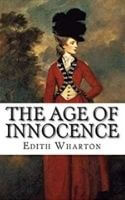
Synopsis: A young lawyer falls in love with his cousin’s fianceé in New York high society.
Why it’s important: Wharton is another quintessential modern female author who isn’t taught enough in high school. Her writing style and emphasis on complex characters is also similar to the sort of content that is covered in the literary fiction passages of the SAT and ACT reading sections.
A Room of One’s Own by Virginia Woolf

Synopsis: An extended essay about the importance of finding both figurative and literal space for women in society.
Why it’s important: This is an essential feminist text that also closely aligns with the sort of historical/sociological texts that students see on the SAT.
The Picture of Dorian Grey by Oscar Wilde

Synopsis: A handsome young man sells his soul to the devil in exchange for external youth and beauty, only to find that there are horrific consequences.
Why it’s important: This book both draws-from and invents many literary tropes that we continue to see today. It is a great text for sharpening understanding of symbolism and allegory.
Freakonomics by Steven D. Levitt and Stephen J. Dubner
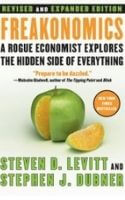
Synopsis: A collection of articles in which an economist applies economic theory to diverse subjects not usually coved by traditional academics.
Why it’s important: This book blends pop culture with economics to make academic material engaging. It is helpful for understanding how to approach the social studies and (to a lesser extent) science passages on the SAT and ACT, as well as how to look at graphs/charts alongside text.
High School Reading List : Junior Year
Heart of darkness by joseph conrad.

Synopsis: A British traveler narrates his voyage up the Congo River into the heart of Africa.
Why it’s important: The language in this text is a bit challenging, providing good practice for working through the sort of writing that students tend to find the most difficult in SAT and ACT reading sections. It is also a good text for thinking about symbolism and ambiguity.
The Souls of Black Folks by WEB Du Bois

Synopsis: A collection of essays about race in America at the turn of the century.
Why it’s important: This is a rewarding but slightly difficult read. The collection of essays aligns closely with the types of historical essays that students tend to find challenging on the SAT and provides good practice for working through complicated language.
The Feminine Mystique by Betty Friedan
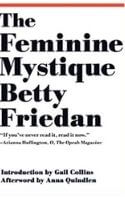
Synopsis: Widely credited with sparking the beginning of second-wave feminism in the United States, Friedan’s book examines the feeling of discontent that many women were experiencing in the middle of the 20 th -century.
Why it’s important: Friedan initially started this project with the intention that it be an article after she was shocked by the results of a survey among college-educated women. Written through a combination of interviews, psychological research, surveys, etc., Friedan makes a strong social argument that aligns well with both historical and social studies passages on the SAT and ACT.
Pride and Prejudice by Jane Austen

Synopsis: A strong-willed woman’s family pressures her to marry for wealth in 1800’s England.
Why it’s important: Arguably Austen’s most famous work, this book has been hugely influential in establishing what’s come to be known as “the marriage plot” and creating a template for stories to come. Not only will it provide a deeper understanding of future texts, but it aligns well with the sort of literary fiction passages found on the SAT and ACT.
Freedom by Jonathan Franzen

Synopsis: This novel follows the lives of the members of a Midwestern family as they struggle to find happiness and ultimately fall apart.
Why it’s important: An in-depth psychological look at the American family, this is a great text for considering multiple perspectives and character.
History’s Greatest Speeches edited by James Daley

Synopsis: A collection of history’s most important speeches.
Why it’s important: This is a collection of essays that aligns well with the sorts of essays that students see in the historical passages on the SAT, as well as the SAT writing prompts. It’s also great source material to practice close reading skills and rhetorical analysis.
Sapiens: A Brief History of Humankind by Yuval Noah Harari

Synopsis: A survey of the history of humankind.
Why it’s important: This book blends natural and social sciences seamlessly, providing helpful content for considering both the science and social studies passages on the SAT and ACT.
High School Reading List : Senior Year
Cloud atlas by david mitchell .

Synopsis: An epic saga that follows a single soul as it is reincarnated through different lifetimes over a span of roughly 400 years.
Why it’s important: This novel is structured as six different stories that stand alone but inform one another as the same soul progresses through time. Each story is written in a radically different genre, providing an excellent opportunity to practice a diverse set of analytical skills on independent stories while also thinking about how they fit together to contribute to theme. This is a difficult read, but a masterful example of literary craft and character.
A Tale of Two Cities by Charles Dickens

Synopsis: This novel follows the story of a doctor imprisoned in France and then released to live in London, set against the French Revolution’s Reign of Terror.
Why it’s important: This is maybe Dickens’s most important text, with arguably his most engaging plot and his best built-out cast of characters. It provides a great study for students looking to think about character archetypes and classic tropes in literature.
Lincoln in the Bardo by George Saunders

Synopsis: An experimental novel focused on the ghosts inhabiting the graveyard in which Abraham Lincoln’s recently deceased son finds himself inhabiting.
Why it’s important: Blending real historical documents with narrative fiction, this is a useful text for becoming comfortable with the sorts of passages students see in both the historical/social studies passages and the literary fiction passages on the SAT and ACT. The experimental nature of the novel makes it a difficult read, but it’s a rewarding challenge for advanced readers looking to stretch themselves before college.
In Cold Blood by Truman Capote

Synopsis: A non-fiction account of a family of murders that occurred in small-town Kansas in 1959.
Why it’s important: While this is a non-fiction book, it reads like a thriller and is an engaging way to open students up to non-fiction and varied character perspectives.
To the Light House by Virginia Woolf

Synopsis: This novel centers on a family’s visits to the Isle of Skye in Scotland over the course of a decade.
Why it’s important: This book is an influential text that has been cited as a key example of “focalization,” meaning that it is written almost entirely as a series of internal thoughts/observations from the protagonist. There is very little dialogue or action, and the plot of the novel is secondary to the philosophical introspection of the characters, providing readers an opportunity for a different sort of critical thinking than they might get from other novels.
Wuthering Heights by Emily Brontë

Synopsis: The intense, almost demonic love story of a man and woman in 19 th -century England as social expectations and gender norms tear them apart.
Why it’s important: This is one of the most important examples of Gothic literature, notable for challenging Victorian ideas about religion, morality, and femininity. It’s a great introduction to the genre, as well as a helpful text for thinking about symbolism, mood/atmosphere, and theme.

Annie is a graduate of Harvard University (B.A. in English). Originally from Connecticut, Annie now lives in Los Angeles and continues to mentor children across the country via online tutoring and college counseling. Over the last eight years, Annie has worked with hundreds of students to prepare them for all-things college, including SAT prep, ACT prep, application essays, subject tutoring, and general counseling.
Privacy Preference Center
Privacy preferences.
English Reading List
The first-year english course.
The first-year English course at Oxford is mostly divided between Early Medieval English Literature and the literatures of the Victorian period and of the 20 th and 21 st centuries. Early Medieval English is taught throughout all three terms; the period 1830 – 1910 is taught in the first term (Michaelmas) and the modern period in the second term (Hilary). The teaching of these subjects is done by a mixture of tutorials and classes here in Balliol; and there is a complementary programme of lectures and seminars offered by the University English Faculty, and you are encouraged to take full advantage of that. You will also be taking an introductory course (‘Paper 1 ’) which is taught by a series of compulsory Faculty lectures as well as by classes and tutorials in College.
You will be assessed on all this work by a number of examinations, called Prelims, which you will sit at the end of the third term (Trinity), as well as by a Portfolio for Paper 1 submitted during Trinity. This is a Pass/Fail examination, with the possibility of Distinction. Your performance in Prelims does not count towards your final degree, which is entirely based on your performance in exams and coursework during your third year. You will also be set some College examinations (Collections) at the beginning of Hilary and Trinity Terms: these do not count towards your degree either, but are just a way for your tutors to keep an eye on your progress.
Preparing for your course
You have a busy year ahead of you, and it will simply not be possible to read large amounts during term-time: it is very important that you are properly prepared for the course when you come up to Oxford. This page suggests the directions that your preliminary reading might most usefully take. Remember that cheap second-hand books can often be purchased online at abebooks.co.uk and other on-line booksellers.
Joint schools
If you are set to study English and Modern Languages or History and English, you will be sitting two examinations in English (single honours students sit four). Paper 1 – the introduction to language and literature – is compulsory; the other is for you to choose: either Victorian literature or twentieth century literature or Early Medieval English literature. Students tend to choose either Early Medieval or Modern as the timetabling makes it rather challenging to fit in Victorian literature; but talk to us if you want to explore that possibility. You should aim to read a generous selection of the texts listed below as you need to make an informed decision about which of these papers to sit in Prelims. Joint schools students are warmly welcome to attend classes on the period they are not going to offer in Prelims.
If you would like any further guidance about what to read or which editions to use, please feel free to contact us.
Introduction to English Language and Literature
This paper comes in two parts: 1 A (which you will study in Hilary term) is about language and 1 B (which you will study first, in Michaelmas) is about approaches to the study of literature—a sort of ‘literary theory’ paper, but we will be approaching it in a practical way with close readings and critical appreciations of text as well as sampling some of the leading critical voices. There is no particular preparation required for this paper: I shall distribute texts for our classes once you are here. If you have time on your hands, however, you could look at Jonathan Culler’s Literary Theory: A Very Short Introduction (Oxford University Press) which would introduce you to some of the major questions.
The English Faculty Library’s Guide to Prelims 1 contains direct links to a range of online and bibliographic tools. The College, Faculty, and University libraries offer access to many useful resources that are too expensive to warrant individual purchase: you can work with them once you arrive.
Advance reading for paper 1 A in the second term will be given over the winter vacation. To get a head start, over the summer it is an excellent idea to read an introductory text such as The Stories of English by David Crystal (you may be able to borrow this from your local public library).
If you have any questions about 1 B , please contact: seamus.perry@balliol.ox.ac.uk and for 1 A get in touch with: hannah.ryley@ell.ox.ac.uk .
Early Medieval Literature 650 ‑ 1350 (Old and Early Middle English)
Prelims paper 2 introduces the literature, language, and cultural history of early medieval England. The period 650 ‑ 1350 spans the conversion of the migrant Anglo-Saxons through to the turbulent reign of Edward III . The focus is on literature in Old English, the language of the Anglo-Saxons, and Early Middle English and its development after the Norman Conquest of 1066 .
You will work on this paper in both the first and second terms, before being assessed by examination in the third term. In the first term, you will have language classes and translation assignments to help you get to grips with texts in the original language. In the second term, language work will continue and you will also write essays. The exam is split into two parts: a commentary, and then two essays.
There is an extraordinarily rich body of literature in Old English, including texts in a variety of genres such as epic, lament, chronicle, riddle, dream vision, hagiography, and homily, while Early Middle English sees the flourishing of debate poetry, lyric, and romance.
Starting points
To get a feel for the literature of this period, aim to read a selection of Old and Early Middle English texts in translation before you come to Oxford. Asterisks (*) designate essential reading. Reading widely will help you prepare for the essay section of the exam.
- Seamus Heaney, Beowulf (London: Faber & Faber, 1999 ). This creative translation is a beautiful introduction to Beowulf , a key text for this paper. It’s a great place to start.
- Elaine Treharne, ed. and trans. Old and Middle English c. 890 ‑c. 1400 : An Anthology , 3 rd edn (Oxford: Blackwell 2010 ). It is essential to own a copy of this anthology; dip in and read widely! Begin with the ‘Introduction’, and read whatever most appeals to you. I suggest focussing on working through a selection of the texts in the first 225 or so pages.
- Roy Liuzza, ed. and trans. Old English Poetry: An Anthology (Peterborough, ON : Broadview Press, 2014 )
Commentary and language
In the exam, you will be asked to demonstrate knowledge of either Old English or Early Middle English by discussing the language and style of an extract. This exercise is known as the ‘commentary’. At Balliol, the focus will be on Old English, and the ‘set texts’ we will translate and study in preparation for the commentary section of the exam are: The Dream of the Rood, The Wanderer, an extract from Beowulf (‘Beowulf’s fight with Grendel’), and The Battle of Maldon.
Over the summer, begin to familiarise yourself with Old English by reading a guide to the language.
- For a fun introduction: Hana Videen, The Wordhord: Daily Life in Old English (London: Profile Books, 2021 )
Then, I recommend choosing one of the following:
- Peter Baker, Introduction to Old English , 3 rd edn (Chichester: Wiley-Blackwell, 2012 ). See also Baker’s online resources, to accompany the book http://www.oldenglishaerobics.net
- Mark Atherton, Complete Old English: Teach Yourself (London: Hachette, 2012 )
Familiarity with the cultural and historical background to the texts we’ll be studying together will really help you to understand important themes and motifs; the following are highly readable and great places to start:
- Browse this wonderful blog about the medieval seasons and the religious year, which often features local Oxford detail, by Eleanor Parker: https://aclerkofoxford.blogspot.com/
- See also Eleanor Parker, Winters in the World: A Journey Through The Anglo-Saxon Year (London: Reaktion, 2022 )
- Amy Jeffs offers creative adaptations of stories from this period in Wild: Tales From Early Medieval Britain (London: riverrun/Quercus, 2022 )
- Miri Rubin, The Middle Ages: A Very Short Introduction (Oxford: OUP , 2014 )
- Hugh Magennis, ed. The Cambridge Introduction to Anglo-Saxon Literature (Cambridge: CUP , 2011 )
- Clare A. Lees , ed. The Cambridge History of Early Medieval English Literature (Cambridge: CUP , 2013 ), 475 – 498
To prepare for this paper, I warmly encourage you to read widely over the summer before term begins. Just to recap, the two essential texts are: Treharne’s Anthology , and Heaney’s Beowulf .. Second-hand copies of these, and many of the other texts on this list, can be found on https://abebooks.co.uk or https://www.bookfinder.com or similar. At the time of writing it costs about £ 10 – 15 to equip yourself with second-hand copies of the two recommended texts. If you have any questions at all about this paper, or difficulties getting hold of any these texts, please get in touch with me by email: hannah.ryley@ell.ox.ac.uk Happy reading!
Victorian and Modern Literature
These papers require a lot of reading and you should aim to read many of the major texts before coming to Oxford. Take notes as you read, focusing on language, style and form, to aid your essay-writing during term. For each of the period papers you should expect to study (and write an essay on) about four authors or subjects (such as a genre – ‘elegy’ or ‘nonsense poetry’ – or a literary grouping – ‘Pre-Raphaelite poetry’ or ‘Poetry of the 1930 s’). There is a small number of major authors that I would like everyone to know so we have those texts in common: I have marked them in the list ‡. We like to give our students the opportunity to write about what enthuses them: we do not aim to be prescriptive, but advice and more specific guidance about reading is always on hand.
We are beginning this half of the course with writers of the last two centuries, but it is an excellent idea to have some sense of the larger shape of the history of literature in English, and you could have no better introduction to the poetry than Christopher Ricks’s Oxford Book of English Verse (Oxford University Press), which ranges from medieval lyrics to the end of the twentieth century. Don’t try and read it systematically: just browse. Ricks’s introductory essay, ‘Of English Verse’, is a suggestive account of the line of great poet-critics that is one of the characteristics of the English critical tradition. Another excellent anthology is The Rattle Bag by Ted Hughes and Seamus Heaney (Faber); and, of modern verse, Scanning the Century , ed. Peter Forbes (Penguin).
A general reference book can be a helpful friend if you come across a reference or an allusion you don’t recognise: Dinah Birch’s Oxford Companion to English Literature (Oxford University Press) is a good one.
Once here, you will spend a lot of your time writing essays of literary criticism and appreciation, and it is a good idea to see how other people do it. A book of essays to sample might be Christopher Ricks’s The Force of Poetry (Oxford University Press), an outstanding collection of pieces about English poets from Gower to Stevie Smith. The essays of Seamus Heaney are exemplary in their balancing of local detail and broader understanding: his selected prose is gathered in a volume called Finders Keepers (Faber). Helen Vendler also combines the close reading of texts with wider concerns in a distinguished way: her essays are collected in several volumes, such as The Music of What Happens: Poems, Poets, Critics (Harvard University Press). Barbara Everett’s book Poets in their Time (Faber) is long out of print but worth seeking out in a library or on-line: it is a wonderful collection of critical pieces. Stephanie Burt’s The Poem Is You: 60 Contemporary American Poems and How to Read Them (Harvard University Press) is a vivid anthology of modern American poems with short essays about them.
Victorian literature
For the Victorian period, the best single annotated anthology is probably Valentine Cunningham’s The Victorians: An Anthology of Poetry and Poetics (Blackwell): it is out of print but you could find it second hand or in a library . Nineteenth-Century Women Poets: An Oxford Anthology , ed. Isobel Armstrong, Joseph Bristow, and Cath Sharrock (Oxford University Press) is a generous and capacious book which illuminates the variety of women’s poetry in the century. Daniel Karlin’s Penguin Book of Victorian Poems is also excellent. Together they contain most of the poems I have listed below, but the poems are widely available elsewhere, many on-line; and all the novels are in Penguin or Oxford World’s Classics or other cheap editions other than those I have mentioned. It doesn’t often matter too much which edition you use, but I’ve made a few suggestions below in case you would like to buy some books beforehand.
It is probably not worth plunging too deeply into works of criticism or historical context at this stage; but if you would like to look at some easy-to-swallow history you could try A.N. Wilson’s The Victorians (Arrow). There is a marvellous old book ( 1913 ) by G.K. Chesterton called The Victorian Age in English Literature that you might enjoy. Philip Davis’s The Victorians (Oxford University Press) is full of suggestive criticism; Angela Leighton’s Victorian Women Poets: Writing Against the Heart (Root) is also very good; Isobel Armstrong’s Victorian Poetry: Poetry, Poetic and Politics (Routledge) is an extraordinarily ranging and ideologically attuned account. George Levine’s How to Read the Victorian Novel (Blackwell) is an attractive and original guide to the genre; Gillian Beer’s Darwin’s Plots (Routledge) is a celebrated and highly readable account of the impact of evolutionary thought on fiction of the period. But please feel free to concentrate on the primary texts for now.
The following texts are what you should read before you come up to Oxford:
- Alfred Tennyson ( 1809 − 1892 ), Mariana , In Memoriam , Maud
- Walt Whitman ( 181901892 ), Leaves of Grass
- Emily Brontë ( 1818 − 1848 ), Wuthering Heights
- Frederick Douglass (? 1818 – 1895 ), Narrative of the Life of Frederick Douglass
- George Eliot (Mary Ann Evans) ( 1819 − 1880 ), Middlemarch
- Henry James ( 1843 − 1916 ), Turn of the Screw , The Aspern Papers
- Joseph Conrad ( 1857 − 1924 ), Heart of Darkness , The Secret Agent
I have also made a list of a lot of other Victorian works which you might best try next , but this list is for your guidance rather than all required reading. Follow your enthusiasms.
Twentieth and Twenty-First Literature
You have enough to be getting on with, I am sure; but if you want to try something in anticipation of the modern paper which we are studying in Hilary term you might try the following: E.M. Forster, Howards End ; James Joyce, Dubliners ; Virginia Woolf, To The Lighthouse ; Saul Bellow, Seize the Day ; James Baldwin, Giovanni’s Room .
Seamus Perry July 2023
- Academic Life
- Student Life
- Buildings and Gardens
- Remarkable Alumni
- Sustainability
- College Magazine
- Visitor, Master and Fellows
- Academic Visitors
- College Lecturers
- College Officers and Committees
- Early Career Fellows
- Emeritus Fellows
- Foundation Fellows
- Honorary Fellows
- Student Members
- Staff by Department
- Academic vacancies
- College jobs
- Asian and Middle Eastern Studies
- Biomedical Sciences
- Classical Archaeology and Ancient History
- Classics and Modern Languages
- Classics with Asian and Middle Eastern Studies
- Computer Science
- Computer Science and Philosophy
- Economics and Management
- Engineering Science
- English Language and Literature
- English and Modern Languages
- History (Ancient and Modern)
- History and Economics
- History and English
- History and Modern Languages
- History and Politics
- Law (Jurisprudence) and Law Studies in Europe
- Mathematics
- Mathematics and Computer Science
- Mathematics and Philosophy
- Mathematics and Statistics
- Modern Languages
- Modern Languages and Linguistics
- Philosophy and Modern Languages
- Philosophy, Politics and Economics (PPE)
- Physics and Philosophy
- Postgraduate Courses
- School Visits
- Outreach Talks and Events
- Access Programmes for Year 12 Students
- Outreach Resources
- Undergraduate Prospectus
- Why Balliol?
- Academic Reasons to Choose Balliol
- Accommodation
- Applying to Balliol
- Finance and Support
- Living Costs at Balliol
- Frequently Asked Questions
- Organ Scholarship
- Accommodation and Facilities
- Holywell Manor Community
- Scholarships
- College Selection Criteria
- Fees and Living Costs
- Maps and Directions
- Virtual Tour
- Senior Members
- Freshers e-Guide: Graduates - Hilary and Trinity Terms
- College Handbook
- Academic Support
- Accommodation: Graduates
- Accommodation: Undergraduates
- Financial Information
- Financial Support
- Single Sign-On (SSO) and email
- Internet Access
- Personal computers
- Computing Rules
- Master's Field: accommodation
- Master's Field: pavilion, squash court and changing rooms
- Policies and Statutes
- Publications
- Prize Holders
- Scholarship and Exhibition Holders
- Career Mentoring Sessions
- Balliol Interdisciplinary Institute
- Rules and Conditions
- Junior Deans
- Emergencies
- Counselling and Mental Health Support
- Sexual Violence and Assault
- Academic or Financial Support
- Students who are Care Experienced, Estranged or Parents
- Other Wellbeing & Welfare Support
- Vacation Support for Graduates
- Library Rules
- Visiting the Historic Collections Centre
- Exhibitions and Outreach
- Brief History of Balliol College
- The Founders of Balliol College and their Families
- Balliol College Heraldry
- St Catherine of Alexandria, College Patron
- History of Scholarships, Exhibitions and Prizes
- Buildings and Stained Glass
- Busts, Statues and Portraits
- St Cross Church
- Masters of Balliol College
- Researching Past Members
- Library and Archive Contacts
- Chapel Services
- Non-Christian Faith Groups
- Weddings in Chapel
- History of the Chapel
- Conferences
- What Our Clients Say
Designing effective reading lists
Questions to consider when preparing reading lists.
Students' approaches to reading lists vary, depending on the type of lists they have previously encountered, how they have been expected to use these, their research skills and whether they have had practice reviewing and evaluating literature. Creating reading lists that are structured, focused and contextualised help students to plan and engage with reading. This resource introduces four questions to consider when designing reading lists.
Further guidance is available on creating targeted reading lists to support disabled students .
How is the list structured?
Students will encounter numerous reading lists, each with its own structure and expectations for use. Once you've chosen a structure, make it clear to students why it is structured in this way and how you expect students to use it. A clear structure will enable students to prioritise reading and make appropriate use of resources. Here are some suggestions for ways to structure your list, which can be used on their own or together:
- Highlight core and additional reading. This is particularly important for lengthy reading lists. Highlighting particularly useful chapters or sections can help students to organise and focus their reading, which is key if students are expected to complete reading during short term-times.
- Identify topics. Some reading lists may cover a variety of topics, so consider grouping the list according to these. This will help students to prioritise what’s relevant for each particular question or area of study and pursue developing interests.
- Timetable reading. If you plan to focus on a particular text or topic each week or teaching session, consider making this explicit, for example, by using headings such as ‘Week 1 Reading’. This will mean that students know what is expected of them for each session and can plan the order in which they choose to read texts.
In addition to structuring your reading list, consider providing brief annotations for each of your recommended readings. This might include information about why you’ve included it and what the main focus of it is (this is not always obvious from the title alone). Having some contextual information such as this will help the student to be more effective in their reading. It gives students the ability to judge which resources are most appropriate for their topic or interests, highlights aspects to pay attention to in their reading, and reduces the burden of having to locate and skim-read numerous texts that may not be relevant.
How accessible is the reading?
To ensure students can access the resources you plan to include in your list, try the following:
- Check SOLO . It's a simple step, but searching the University's library listings to check whether copies of the text are available (either electronically or in libraries) is essential. If there’s only one copy of the book, if it is out of print, or if your students can’t access a resource because it isn’t available in their college or department library, consider whether it is essential. If it is, share key chapters or sections by scanning and creating a PDF file. This is essential if learning is taking place online and students can't access libraries.
- Make your list available in advance. It can take at least six weeks for students to receive texts in alternative formats such as Braille, enlarged print, or audio recordings. Make your reading list available early to give students with specific learning requirements sufficient time to request copies that they can use.
- Use Oxford Reading Lists Online (ORLO) . ORLO provides direct links from the citation to the full electronic text, if available, or to the library catalogue listing, making texts more accessible for everyone. Those using text-to-speech software can have immediate access because it is in digital form. Direct access to electronic versions from the reading list greatly enhances accessibility for disabled people. The system enables reading lists to be structured, annotated and formatted. For more information about the availability contact ORLO .
Does the list reflect the full range of available resources?
- Update lists. If re-using an old reading list, check it is up-to-date and includes the most recent editions of texts. New texts or alternative resources may have been published since the reading list was first written, which may need adding.
- Invite student feedback. Have your students found a recommended resource or text especially helpful or unhelpful? Perhaps they have identified an alternative text which they found relevant and engaging. Inviting feedback from your students about how they used the reading list and engaged with the suggested texts will help you to develop a list that includes the most relevant and useful range of resources.
- Diversify. To suit different modes of teaching and learning, try to include a range of resources in different formats, such as books (paper and electronic versions), journal articles, websites, podcasts and videos. In addition to diversifying your resources, check whether your list includes a range of perspectives and contributors or if it overlooks certain voices and debates. Reflect on the perspectives and voices you’re asking students to engage with and whether these are balanced.
How does it support students’ research skills?
Some ideas are listed below to help you to support students to develop the skills to find and evaluate material independently, either beyond the reading list or when no reading list is provided. These will work best when explicitly introduced as standalone activities as students will more clearly see the aim and purpose of the exercise.
- Provide a starting point. Provide students with a list of just a few key journals and invite them to find relevant peer-reviewed material on a specific topic. Doing this in a group, where students can compare results, will prompt discussion about the different techniques and search methods they used.
- Build a list. Asking students to work alone or in pairs to design their own reading list on a topic can give insights into the research and evaluation skills that students currently have and those they need to develop to further.
- Provide resources to evaluate. This can be done as a short in-class activity where you provide students with a handful of resources and give them a specified amount of time to select which ones are most relevant and appropriate for a particular topic/question. Getting students to feed back their decisions and the rationale about the resources they chose and those they discarded, can provide an opportunity to brainstorm the different techniques that students can use to evaluate material. For example, reading abstracts, searching for key words, identifying the source of publication, and so on. Alternatively, reverse the activity so that different students/pairings are each provided with a different aspect to focus on (eg reading abstracts) and use this to compare the different approaches and their results.
- Use a cover sheet. An example of an ongoing activity is to ask students to fill in a cover sheet accompanying submitted work. The sheet invites them to reflect on which resources they used, why, how they identified them, how much of them they read, and whether they used them in the task. This will help students to reflect on their research and analysis skills, for example, they may waste time reading lots of material they never use in the assignment, or they may get caught in a cycle of following endless footnotes and references. Identifying these areas will help you and the student to see where they need to develop - and how - and what they are already doing well.
- Download this Oxford Teaching Idea as a Word document
We encourage you to adapt and build upon the material in any medium or format to suit your individual teaching purposes (for non-commercial purposes only). If distributing your adapted material, we ask that you credit the Centre for Teaching and Learning.
- Reading lists
- Inclusive teaching
SEE ALL OXFORD TEACHING IDEAS
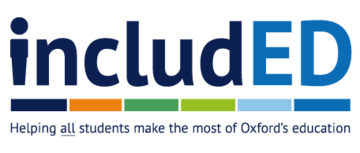
For general enquiries, please contact us at
@CTLOxford
Teaching & Learning Newsletter
Subscribe to our termly Teaching & Learning Newsletter
SUBSCRIBE TO NEWSLETTER

AP® English Language
The ultimate ap® english language reading list.
- The Albert Team
- Last Updated On: March 1, 2022
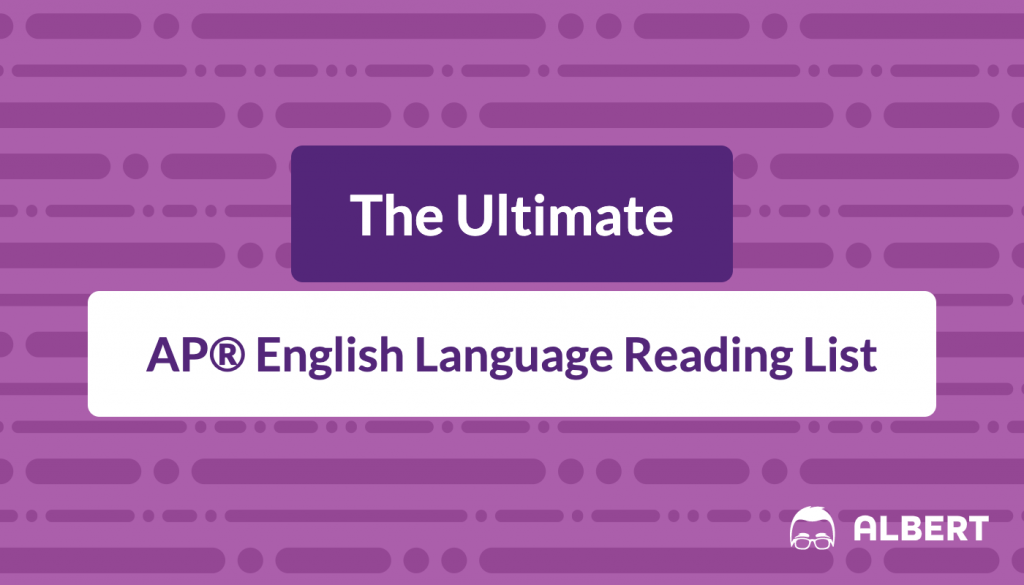
Within the AP English Language curriculum are certain books that will assist you in answering free response questions during the exam as well as some of the multiple choice questions. By being well-read you can get a leg up on the other students, thus vastly improving your score, so get reading! Below is a list of the ultimate AP English language reading list and a quick synopsis for each work.
The Fountainhead
The Fountainhead by Ayn Rand is a novel depicting Howard Roark and his journey through his struggling life. Ayn Rand focuses on her objectivist manifesto as she tells the story of Roark and simultaneously persuading her audience that the self will triumph over all else. Rand utilizes amazing rhetorical prowess in The Fountainhead, making this novel a great way to introduce students to analyzing rhetorical methods and devices. This is important for the second free response question on the AP® English exam, because that essay question will ask the student to pick out how the author uses rhetoric. If you practice with The Fountainhead , then finding rhetorical devices in a work will become much easier.
The Scarlet Letter
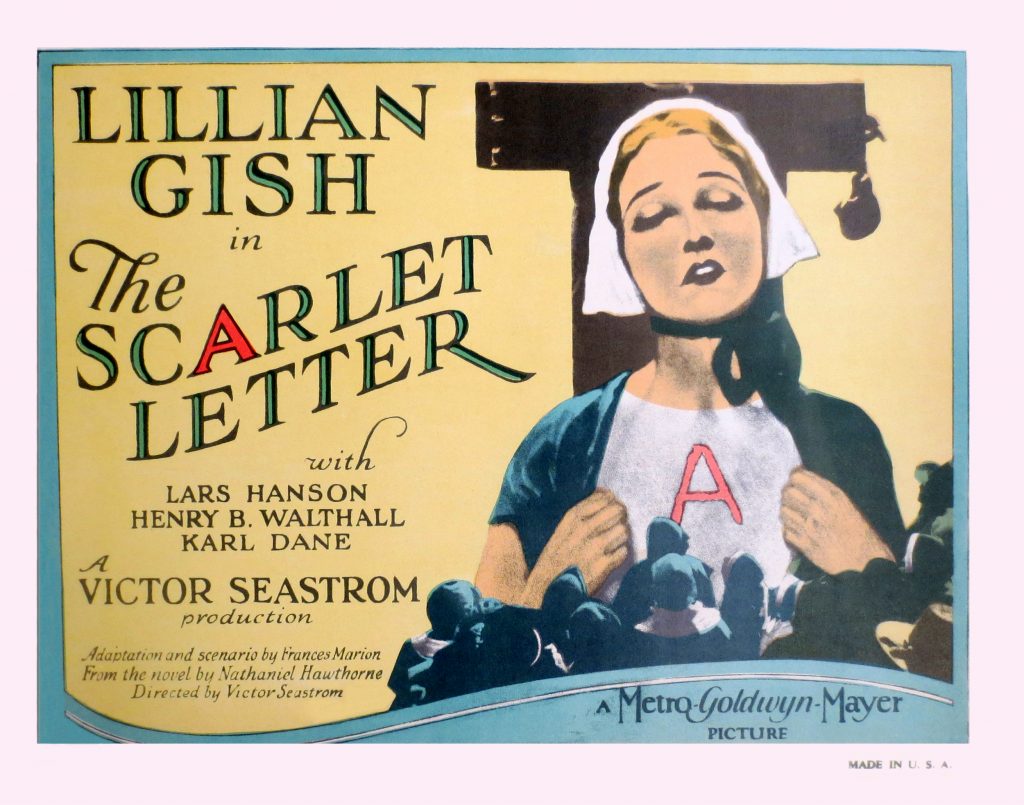
The Scarlet Letter by Nathaniel Hawthorne is a story of a young woman who had an affair with a priest. It is a story of sin, guilt, mystery, and adultery as Hester Prynne makes her way through turmoil when she wore a red letter ‘A’ for adultery. This novel was famous for its use of symbolism, making The Scarlet Letter a fantastic tool for looking beyond the surface of a text. This will serve the student well as he or she analyzes various texts during the multiple choice and the free response section of the AP® English Language exam.
The multiple choice exam dictates that the student must be able to look deeply into a passage and see beyond the words. The questions are made to utilize critical thinking skills that one needs to pick apart The Scarlet Letter.
Hamlet by William Shakespeare was a play that follows Hamlet, the son of the newly murdered king of Denmark. Hamlet was sent into a spiraling depression after his mother remarries and he is unable to claim the throne. Therefore, Hamlet plots to kill Claudius, the new king. He eventually did so after his hamartia takes over and all is already lost. At the end, almost the entire cast was slain.
Hamlet is important to the AP® English Language exam, because Shakespeare utilizes important figurative language, form, and other important writing techniques in order to convey his messages within the play. It is important to explore Hamlet as well because of the different format.
Because some students have difficulty understanding Shakespeare’s iambic pentameter with an interpreter, reading this play will help the student. Hamlet passages often make an appearance in the multiple choice section of the AP® English Language exam. Having a working knowledge of the play will put the student at an advantage over others in the multiple choice section.
The Grapes of Wrath
This next novel is a text that utilizes an important rhetorical device, pathos. Pathos is the appeal to the audience’s emotions, and The Grapes of Wrath shows the reader how to captivate an audience with their own emotions. The Grapes of Wrath by John Steinbeck took place during the Great Depression. Here, we get to follow a group of people that have been terribly affected by the lack of food and work. The various Americans that are focused on show a different perspective on how horrible the Great Depression was the fall and the triumph of the human spirit. It is emotionally captivating and persuading, which is a wonderful model to look at when thinking about how to craft a free response essay.
The Kite Runner
The Kite Runner by Khaled Hosseini was a narrative that depicts two boys, Hassan and Amir, as they grew up in the Middle East. Discrimination was covered in this novel as well as rape culture, victim blaming, and how to deal with trauma in a negative and positive way.
This novel reveals a different perspective than the Eurocentric views that the western world is used to. Its cultural perspective brings into light a point that is essential in the AP® Language exams, which is that everyone is going to have a different way of looking at your argument. Make it as accessible as possible. Also, The Kite Runner is a great example of using pathos, a tool that is essential to the essays on the AP® English Language exam. This novel also utilized narrative as a method of revealing a concept to the readers. By reading The Kite Runner the student learns to see the underlying concepts, which is a great skill to have for the multiple choice section of the AP® English Language exam.
A Thousand Splendid Suns
A Thousand Splendid Suns was the companion piece to The Kite Runner. Written by Khaled Hosseini as well, this text follows three women through their experiences growing up in the Middle East. The exploration of point of view is useful to a student, because the passages given in the multiple choice section may be nebulous in its point of view. Being able to figure out who is speaking and why the author is having him or her speak is valuable for the exam. The marginalization of the woman’s experience is highlighted here and the writing is very concise and to the point. Because of the concise language, A Thousand Splendid Suns is a great example for how to eliminate redundancy in the student’s free response question essays.
The Life of Pi

Another great skill to have going into the AP® English Language exam is to be able to think outside of the box. The Life of Pi by Yann Martel is a novel that focuses on Pi, an Indian boy that is shipwrecked with wild animals. These wild animals, whether they are real or not, tormented Pi and took him on a journey through spiritual awakening. The reader was told at the end of the novel that there are two stories and he or she had to choose which the real narrative was. Seeing outside of the confines of the story will allow the student to see deeper aspects of other texts. This will become useful when reading the sources for the synthesis essay or the multiple choice passages that need thorough analysis.
The Overachievers
The AP® English Language exam emphasizes non-fiction works over the fiction, making the following book even more important. The Overachievers was a non-fiction work by Alexandra Robbins that followed eight high schoolers that were believed to be pressured into the highest GPA and the “best” college. She puts standardized testing in a very negative light as she reports on her findings. This book is important to the AP® English Language exam, because this is a non-fiction source, which embodies much of what the sources will be like for the synthesis essay in the free response section of the exam.
As I Lay Dying
Sometimes it is the journey that matters. In Faulkner’s novel As I Lay Dying, a journey was used as to support the greater whole of the novel and the argument that Faulkner made. As I Lay Dying was a southern gothic novel that embodies the dysfunctional family. The family trekked forty miles toward the city of Jefferson with their dead mother in a coffin. This was her last wish. Through calamities the family went to the city and finally buries her decaying corpse.
This novel can be directly related to the free response questions in the AP® English Language exam, because every supporting detail makes a difference. Like every character in As I Lay Dying contributed to Faulkner’s overall argument.
Freakonomics
In this non-fiction text the author looks into a different topic in every chapter ranging from cheating teachers to legalizing abortion to lowering poverty. He does this by using other sources and bringing other data. This is important to the AP® English Language exam, because the exam’s free response questions will demand that you use a certain amount of the sources provided to craft your argument. Without this ability you will not score well.
A Long Way Gone: Memoirs of a Soldier Boy
Have you ever felt studying for AP® exams is too hard? Well, your troubles will definitely be put into perspective with this next novel. A Long Way Gone was the memoir of a young boy, Beah, who grew up in Sierra Leone amidst the violence. He was taken into an army at a young age and became a child soldier. After becoming addicted to drugs, Beah was rehabilitated by UNICEF.
This non-fiction book is another great addition to your AP® English Language repertoire, because learning how to analyze a memoir and pick out the important parts of the argument will assist you in answering multiple choice questions and writing your essay.
How Starbucks Saved My Life
How Starbucks Saved My Life is another memoir. This one is about an executive that loses his job and has to work at Starbucks in order to make a living. The main character learns from his supervisor about minorities and real hard work.
This non-fiction work utilizes time and facts in order to get across a message. These concrete details and support allows the author to proficiently persuade the audience. The credibility that the author creates for himself is a tool that the student will need to create for him or herself. The student can do this by maintaining clear and persuasive language as How Starbucks Saved My Life did.
Profiles in Courage
Do you have a love of history? Then Profiles in Courage is for you. It is a non-fiction collection of autobiographies written by John F. Kennedy after he researched Senators that tried to stop the Civil War from happening.
The relevancy of the work historically that shows how people can do great deeds in a terrible time. This message is even more powerful after you have read each of the autobiographies. By doing something like this and adding many supporting examples to your argument, then you will gain a large impact.
By reading this work the student gets used to working with real life texts, which is mainly what the free response sources for the synthesis essay will be.
1984 by George Orwell was a dystopian novel about a man that was trapped in a world where it felt like Big Brother was always watching. The man, Winston, starts a sexual relationship with a woman and began to rebel against the totalitarian society. Winston did this until he was tortured at the end of the novel.
1984 is Orwell’s cautionary tale that he argues for very well. Orwell shows examples of what will happen to society, why it will happen, and the effects of this. If you can pick out the rhetorical methods put forth by Orwell, and answer questions about the persuasive technique, then you will have be more prepared for the multiple choice portion. This is because the multiple choice section contains passages with rhetorical devices that the student needs to be able to identify. Practicing with 1984 will get the student ready for that.
A Room of One’s Own
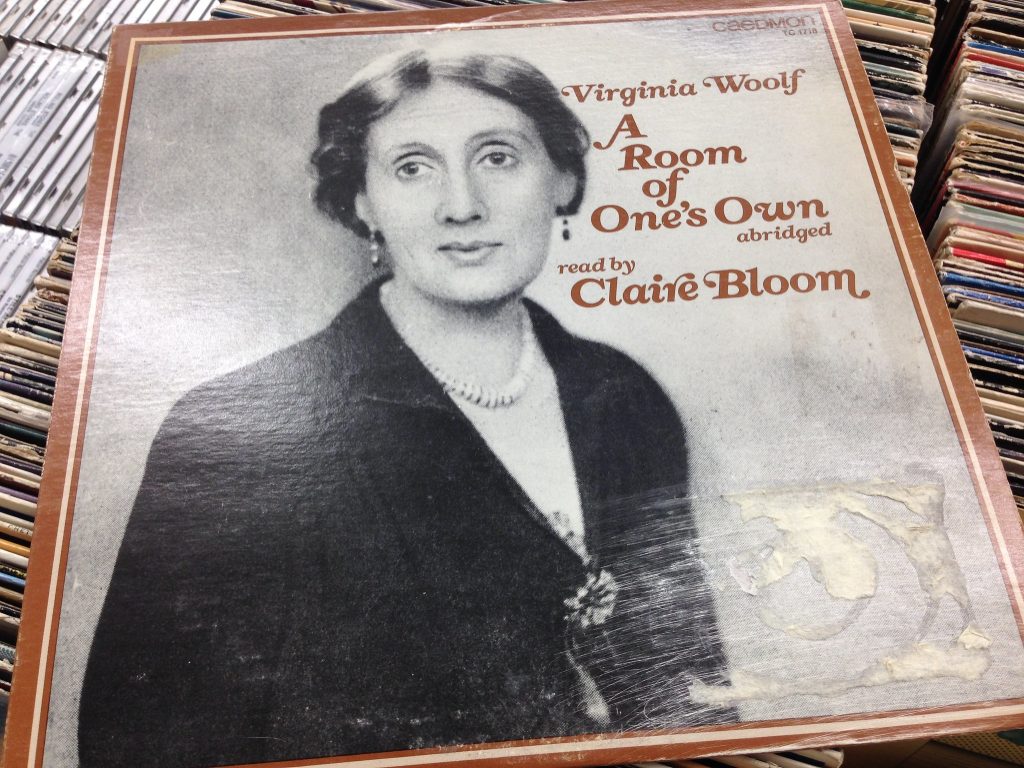
We will now journey into the world of feminism for A Room of One’s Own , an essay by Virginia Woolf. This non-fiction piece revealed the plight of the woman and how a woman in that time period lived. Woolf used her persuasive writing in order to reveal the problem of the repression of women. She did this predominantly by using a bedroom as a symbol for equality. Woolf convinced her readers that women deserve a room of their own.
Virginia Woolf was an enticing author not only because of her persuasive talent. She utilized grammar, diction, and syntax in order to truly enhance her own writing and in turn, her argument. One example of this is in the title of the essay. A Room of One’s Own is a feminist essay, but Woolf specifically uses the word, “one’s” instead of “her”. This careful diction allowed Woolf to push equality is every aspect of her argument from her style to the words itself.
Politics and the English Language
This essay by George Orwell showcases the murky political language that English is turning into. He criticizes the politicians that make lies sound truthful, causing strife within the nation. Orwell lays out his solutions in points very clearly, showing how print needs to be.
This essay is important to doing well on the AP® English Language Exam, because if you follow his advice on the economy of language, then you will clarify your argument. Orwell’s issue with the language was that people cloud their arguments with it, so be sure to read and follow his advice.
This non-fiction book is by Malcolm Gladwell, who argues that he knows the story of success. He illustrates how to succeed in everything: from ice hockey to accumulating a Bill Gates level of wealth.
This is important for the betterment of your score, because this author not only seems to have the recipe for success, but he also makes a clear argument that is a wonderful example for crafting an argument.
The Unknown Citizen
The Unknown Citizen is a poem that was written by W. H. Auden. He criticizes individualism in the United States that he does not believe exists. Auden also spoke of a time before. This was a time where individuals were only to be known for their number. He then discussed controlling government agencies that micromanage the people’s lives.
This poem will be useful, because the exam focuses on real world criticisms within unfamiliar texts. The poem was all about criticizing the world in which Auden lived, making this poem great practice for the exam.
Silent Spring
Silent Spring was an environmental look at society written by Rachel Carson. This non-fiction book focused on the destruction of bird species because of the pollution of pesticides. This book led to the banning of the dangerous pesticide, DDT.
This was a great book to read, because this was an argument that won the day. Carson got what she wanted, and she also spread awareness for her cause. This was what you want to do on exam day. Silent Spring was also a non-fiction work; therefore, the intense analysis of the work will be good practice for the AP® test.
Utopia by Thomas More was a book that was written in 1516 in Latin. This was written to convey his ideas about political, social, and religious norms in society. Strong arguments are spurred forward by More’s use of fiction. Because of this, Utopia is a valuable work to have a working knowledge of for the AP® English Language Exam. More’s use of fiction is a popular and effective way to persuade, and knowing this will assist you in your multiple choice portion of the exam.
Since Utopia was written in a much older vernacular, this gives the students a different approach to prose that will prove useful if older texts come up on the exam.
One of Shakespeare’s most famous plays, King Lear, is another great work to have in your repertoire. This tragedy was about a man called Lear that splits his estate between his three girls based on how well they flatter him. Naturally, everything fell apart as human nature destroys Lear.
This was an important one to have in your mind on exam day, because the writers of the exam love to throw in a Shakespeare excerpt in the multiple choice section, and this is one of Shakespeare’s most famous plays. Being able to pick this work apart will set you apart from the others.
Julius Caesar
Julius Caesar is another famous play by William Shakespeare. Even though the play is called Julius Caesar, the psychological tragedy focuses more on Brutus’s patriotism and his guilt.
The amazing language that is used within the play made the work stand out. The figurative language is so compelling that it would be remiss if we had not mentioned it. To have a great argument you may need some beautiful figurative language, and this is a great example.In the multiple choice section you will have to pick out certain figurative language terms, so practicing identifying them in this work will be helpful.
The Handmaid’s Tale
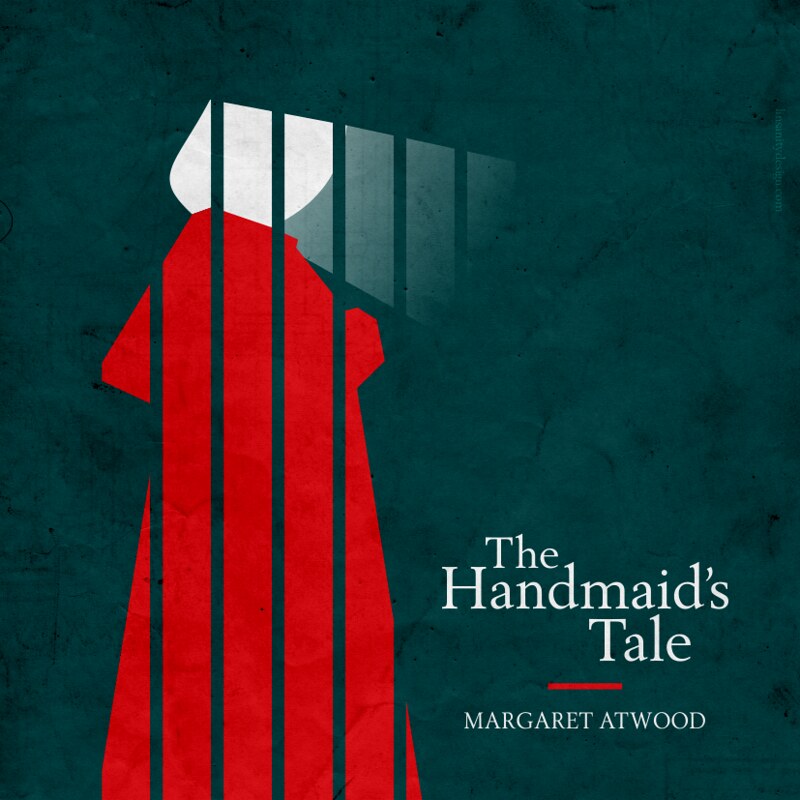
The Handmaid’s Tale is a work of fiction that speculated the dystopian future of a Christian theocracy that overthrows the United States government. This is another example of how working with a concrete, definite message through fiction will make your argument cement in the minds of your readers.
While this may not be possible to write in fiction on your AP® English Language Exam, you will get extra practice in analyzing that argument under the layers of fable. Analysis is extremely important in every aspect of the AP® English Language exam from the multiple choice to the free response section.

Kabul Beauty School
Deborah Rodriguez, the author of the novel Kabul Beauty School, writes in her book about her experiences travelling to war torn Afghanistan. This heart-warming tale reveals the social and political issue of war torn nations and the treatment of women.
This more modern novel is a great addition to your reading list, because the message of equality is sent through this novel, utilizing subtlety and a ton of pathos. This appeal on emotions allows the audience to get close to the argument and buy into it. Doing this on your exam will give you a leg up.
Also, being able to think in different ways, like Rodriguez does, will allow you to see different angles on the multiple choice sections. Some questions do not have a straight forward answer and must be thought of differently.
The Great Gatsby
The Great Gatsby , a novel by Fitzgerald, is the story of an outsider that meets a man named Gatsby. Gatsby is a rich man that covers his insecurities and traumas by throwing extravagant parties. Symbolism runs rampant in this tale as the “green light” that Gatsby stares at longingly represents his unattainable love, Daisy. Gatsby’s life unfortunately ends as he is shot in the closing of the novel.
Fitzgerald uses a stunning precision and beautiful phrasing in order to convey his point. He looks at Gatsby as he looks at society, once again showing that symbolism. This is a great way to strengthen your argument and practice identifying different elements of figurative speech for the multiple choice section.
The Crucible
The Crucible is a play written by Arthur Miller that focuses on Puritans and the Salem Witch Trials. The Salem Witch Trials originated when girls blamed men and women they disliked in order to get rid of them. This play focuses on how religious zeal can cause mass hysteria and paranoia.
Having that dramatic aspect added to a historical aspect puts even more power in the play. The story focuses on how characterization can fuel an argument or message.
By revealing the character of the individual you can enhance your essays. You can also think about this idea in terms of applying what you know to questions you are given in the multiple choice section. If you are not sure about one of the questions, then apply a work that you understand to the question. This may illuminate the answer.
In Cold Blood
In Cold Blood was written by Truman Capote to document the Herbert Clutter murders. The author does extensive research of these murders and on the criminal Clutter himself in order to get his message across. Without this skill you will not be able to properly answer your free response questions adequately. After all, the most important piece of the free response essays is your argument. You need to be able to make a claim and support it as Capote does.
Also, the non-fiction element of Capote’s work relates well to other passages that you will see on your multiple choice section of the AP® English Language exam.
Reading for Success
This AP® English Language reading list, while it does not encompass every book that will be useful during the AP® English Language Exam, this list is a great place to start and finish. This is a ton of reading material, and by completing this list you will increase your AP® score.
Interested in a school license?
Popular posts.

AP® Score Calculators
Simulate how different MCQ and FRQ scores translate into AP® scores

AP® Review Guides
The ultimate review guides for AP® subjects to help you plan and structure your prep.

Core Subject Review Guides
Review the most important topics in Physics and Algebra 1 .

SAT® Score Calculator
See how scores on each section impacts your overall SAT® score

ACT® Score Calculator
See how scores on each section impacts your overall ACT® score

Grammar Review Hub
Comprehensive review of grammar skills

AP® Posters
Download updated posters summarizing the main topics and structure for each AP® exam.
For further reading: Phil Klay’s Brookings Essay reading list
Fred dews fred dews managing editor, new digital products - office of communications @publichistory.
June 3, 2016
In a new Brookings Essay, “ The citizen-soldier: Moral risk and the modern military ,” National Book Award-winning author Phil Klay explores the complex relationship and tensions between members of the military and the civilian world. “In some ways,” Klay, a USMC veteran of the Iraq war, writes, “joining the military is an act of faith in one’s country—an act of faith that the country will use your life well.” Throughout the essay, Klay brings to bear a large volume of material—including historical documents, novels, contemporary analysis, and philosophy—to illuminate and drive his narrative forward. This reading list is by no means a comprehensive collection of war- and military-related material, but offers a deeper dive into the themes and ideas Klay explores in the Brookings Essay.
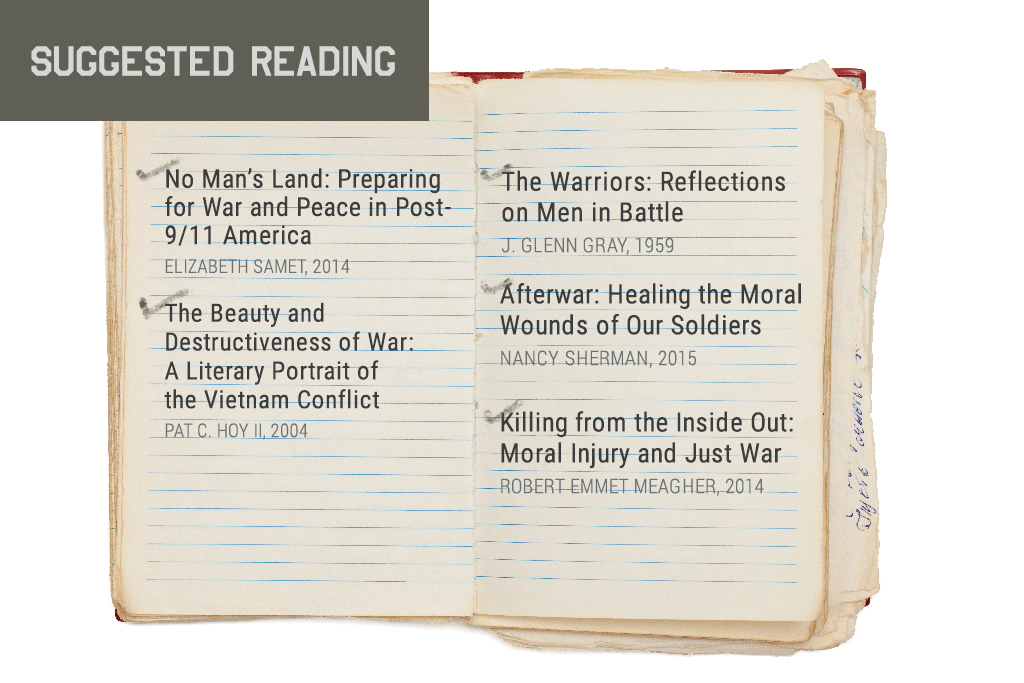
On the “sense of a personal stake in war that the veteran experiences viscerally, and which is so hard for the civilian to feel,” Klay describes how philosopher Nancy Sherman “explained post-war resentment as resulting from a broken contract between society and the veterans who serve.” As Sherman wrote about veterans’ homecomings in “ Afterwar: Healing the Moral Wounds of Our Soldiers ”:
We are a part of the homecoming—we are implicated in their wars. They may feel guilt toward themselves and resentment at commanders for betrayals, but also, more than we are willing to acknowledge, they feel resentment toward us for our indifference toward their wars and afterwars, and for not even having to bear the burden of a war tax for over a decade of war
Klay, the author of the critically acclaimed short-story collection “ Redeployment ,” winner of the 2014 National Book Award, served as a public affairs officer in Iraq’s Anbar Province in 2007 and 2008. He asks in the Brookings Essay, “What is the saving idea of Iraq?” Veterans who served in that conflict, and any other, cannot “pretend” that they have “clean hands,” writes Klay. “… Iraq is destroyed, there is untold suffering overseas, and we as a country have even abandoned most of the translators who risked their lives for us.” And yet, he adds, “this fact seems not to have penetrated either the civilians we come to, or the government that sent us.” Here, Klay references humanities professor Robert Emmet Meagher, who explored the universal acceptance of “just war” doctrine. As Meagher wrote in “ Killing from the Inside Out: Moral Injury and Just War ”:
How many emperors, kings, princes, presidents, politicians, or, yes, popes, who have put their lips to the horn of war have suffered from, or at least complained of, moral injury from war? Closer to home, in the recent wars of the twentieth and twenty-first centuries, how many American presidents, or members of Congress have suffered from PTSD or taken their own lives rather than live any longer with the burden of having declared a war?
“None, of course,” answers Klay.
How do those who have served in war see themselves in relation to the conflict in which they served? Klay notes that many veterans wonder “What was this all for?” and answer the question by “narrowing their focus” from the national level to their own local experience. Here Klay draws upon the writing of Elizabeth Samet, a West Point instructor, who studied how soldiers contend with issues of war and peace in “ No Man’s Land: Preparing for War and Peace in Post-9/11 America . ” Samet wrote of an “ancient strain in today’s war story”:
The lack of an exit strategy and the apparent absence of a clear and consistent political vision guiding the war effort—What does victory look like?—forced many of the platoon leaders and company commanders I know to understand the dramas in which they found themselves as local and individual rather than national or communal. The ends they furnish for themselves—coming home without losing any soldiers or, if someone has to die, doing so heroically in battle—offer exclusively personal and particular consolations that make the mission itself effectively beside the point.
“[P]eople join the military to be a part of something greater than themselves,” Klay writes in the Brookings Essay, “and ultimately it’s deeply important for service members to be able to feel their sacrifices had a purpose.” Those he served with, Klay describes, participated in “small moments of communal satisfaction” to try to “come to terms with the extent of our failure in Iraq.” Here, Klay turns to Pat C. Hoy II, a New York University professor and Vietnam veteran, who, in the essay “ The Beauty and Destructiveness of War: A Literary Portrait of the Vietnam Conflict ” (in Josephine Hendin, ed., “Concise Companion to Postwar American Literature and Culture”), wrote about “the saving rituals [soldiers] performed together” to recover from battle, including:
Burying the dead, policing the battlefield, stacking ammunition, burning left-over powder bags, hauling trash, shaving, drinking coffee, washing, talking as they restored order and looked out for one another’s welfare.
And yet, as Klay notes, citing Hoy, this “purifying idea” is not enough: “Those men had done the soldiers’ dirty job in a war that will probably never end—for them or for this nation.,” Hoy wrote. “That loneliness is what they get in return for their gift of service to a nation that sent them out to die and abandoned them to their own saving ideas when they came home.”
Klay’s source material reaches back to the American Revolutionary War, carries through the Civil War, and into the twentieth century and later. How do veterans who have served in battle discover redemption and “genuine growth as a human being?” Klay asks, and answers with the words of J. Glenn Gray, a philosopher and World War II veteran. In “ The Warriors: Reflections on Men in Battle , ” Gray wrote that, for a soldier:
guilt can teach him, as few things else are able to, how utterly a man can be alienated from the very sources of his being. But the recognition may point the way to a reunion and a reconciliation with the varied forms of the created. … Atonement will become for him not an act of faith or a deed, but a life, a life devoted to strengthening the bonds between men and between man and nature.
Klay goes on to say how this notion “is a way of thinking distinctly at odds with stories of uncomplicated military glory,” thus continuing his exploration of the tension inherent in military service—both for veterans in relation to each other and their wars, and between veterans and civilians.
Klay ends his Brookings Essay on a hopeful note, describing the many ways veterans of today’s wars in Iraq, Afghanistan, and elsewhere come home and continue to offer their services to their communities and countries. “The divide between the civilian and the service member,” Klay writes, “need not feel so wide.” Read the Brookings Essay here , and explore more deeply the diverse and interesting materials Klay has brought to bear.
Full bibliography for “ The citizen-soldier: Moral risk and the modern military ,” a Brookings Essay by Phil Klay (Brookings, 2016). Note that the publication dates and publishers offered do not necessarily reflect the editions used by Klay in his essay.
Améry, Jean. “At the Mind’s Limits: Contemplations by a Survivor on Auschwitz and its Realities” (Indiana University Press, 1980).
Anonymous veteran. “It’s not that I’m lazy” ( Harper’s Magazine , October 1946).
Aristotle. “Nicomachean Ethics” (Book III: Chapter VIII).
Bacevich, Andrew. “Breach of Trust: How Americans Failed Their Soldiers and their Country” (Metropolitan, 2013).
Breckinridge, Henry. “Universal Service as the Basis of National Unity and National Defense” (Proceedings of the Academy of Political Science in the City of New York, July 1, 1916).
Center for Social Development. “The Mission Continues: Engaging post-9/11 Disabled Military Veterans in Civic Service” (August 2011).
Flexner, James T. “George Washington in the American Revolution: 1775-1783” (Hachette, 1968).
Grant, Ulysses S. “Personal Memoirs of U.S. Grant” (1885).
Gray, J. Glenn. “The Warriors: Reflections on Men in Battle” (University of Nebraska Press, 1959)
Hamilton, Alexander. “The Federalist Papers, No. 26” (December 22, 1787).
Hasford, Gustav. “Vietnam Means Never Having to Say You’re Sorry” (blog post, June 1987).
Hoy, Pat C., II. “The Beauty and Destructiveness of War: A Literary Portrait of the Vietnam Conflict,” in “Concise Companion to Postwar American Literature and Culture,” Josephine Hendin, ed. (Blackwell Publishing, 2004).
Jarrell, Randall. “Eighth Air Force” (1969).
Jefferson, Thomas. “Letter to Thomas Cooper” (September 10, 1814).
Jünger, Ernst. “Total Mobilisation,” in “”The Heidegger Controversy: A Critical Reader,” Richard Wolin, ed. (MIT Press, 1991).
Levin, Carl. (U.S. Senate Speech, March 14, 2007).
Loring, B.J. “Pictorial Field Book of the Revolution” (1852).
Lovell, Edward J. “The Hessians and the other German auxiliaries of Great Britain in the Revolutionary War” (1884).
Machiavelli, Niccolo. “The Prince (Chapt. XII)” (1532).
Madison, James. “Constitutional Convention Speech” (June 29, 1787).
Mahedy, William. “Out of the Night: The Spiritual Journey of Vietnam Vets” (Greyhound Books, 2005).
Marlantes, Karl. “What it is Like to Go to War” (Atlantic Monthly Press, 2011).
McCullough, David. “1776” (Simon & Schuster, 2006).
Meagher, Robert Emmett. “Killing from the Inside Out: Moral Injury and Just War” (Cascade Books, 2014).
Obama, Barack. “State of the Union Address” (January 12, 2016).
Roosevelt, Theodore. “The Duties of American Citizenship” (speech, January 26, 1883).
Samet, Elizabeth. “No Man’s Land: Preparing for War and Peace in Post-9/11 America” (Picador, 2015).
St. Clair, Arthur. In Josiah Harmar Papers.
Vonnegut, Kurt. “Slaughterhouse-Five” (1969).
Washington, George. “General Orders” (August 23, 1776).
—, “Sentiments on a Peace Establishment” (May 2, 1783).
Wood, W.J. “Battles of the Revolutionary War, 1775-1781” (Algonquin Books, 1990).

Choose Your Test
Sat / act prep online guides and tips, the 31 best books to read in high school.
Coursework/GPA
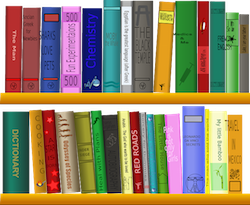
A huge number of books exist out there, ready and waiting for you to read them. Whether you prefer manga or ancient, epic poems, reading is great for all sorts of reasons .
What follows is a list of highly beneficial books to read in high school (or after!). These are remarkable books— books that made history, books that challenge societal perceptions of the world, and books that are quite simply interesting and moving. The books are presented in alphabetical order, and a short description is given for each book, as well an explanation of why it is worth reading.
Why Is Reading Important?
Why should you read these books? Why should you read at all for that matter? Reading is essential to communication, especially in an era of emails and texting. Beyond even that, though, reading has an array of crucial purposes. It will help improve your grades and test scores. You'll learn about other places, other times, and other cultures. You'll encounter issues you can relate to—issues that speak to you and challenge you to think and feel in new ways. You will grow, empathetically and intellectually. Plus, you'll understand more of the references that crop up all the time in pop culture.
Below are 31 books to read in high school that will help you prepare for college and beyond.
1984 (George Orwell)
This dystopian novel by George Orwell was written 35 years before the date referenced by the title. In this book, Orwell tells a story that warns readers about the possible consequences of complacency in the face of rising dictators (think Hitler and Stalin) and burgeoning technology ripe for misuse. He describes a world where everything is monitored, right down to citizens’ thoughts, and where any opposition to the ruling class is punishable by extreme measures. The oft-encountered quote, "Big Brother is watching," finds its origin in this novel.
The Adventures of Huckleberry Finn (Mark Twain)
This sequel to Mark Twain’s The Adventures of Tom Sawyer is much graver in nature than its predecessor. There are still plenty of good antics worthy of a laugh, but it concerns itself largely with a young boy’s attempt to escape severe family dysfunction and the moral implications of his taking an escaped slave as a companion on his adventure down the Mississippi River. Readers should be warned that the " n -word" is used liberally throughout the novel, which tends to be jarring to many a modern ear.
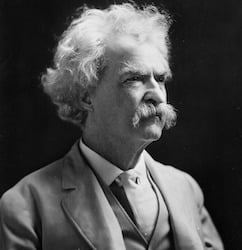
Mark Twain wants you to read his novel(s).
The Awakening (Kate Chopin)
Set in the Creole culture of the late 1800s, this novel by Kate Chopin details one woman’s process of becoming aware of herself. At the time, women were essentially property, and they were expected to act in demure and socially acceptable ways. As the protagonist "awakens" to her emotional and sexual needs, as well as the ultimate truth of her own independence , all sorts of problems ensue. The novel examines the balance between self-respect and selfishness.
The Bell Jar (Sylvia Plath)
This autobiographical novel by poet Sylvia Plath explores the deep, dark reality of mental illness. The protagonist, Esther, a stand-in for Plath herself, is a college student exploring her talents, interests, and sexuality as she descends into an unsettling spiral of mental instability. It is essential for students to understand the seriousness of mental illness as it is so earnestly portrayed in this book.
Black Rain (Masuji Ibuse)
Black Rain , by Masuji Ibuse, is about the very immediate, human consequences of the atom bombs dropped on Hiroshima and Nagasaki. It follows a small family of survivors, detailing what happened to them during the days of the bombing and what the effects are some years later. The book adopts a gentle, subtle tone, and yet it is not afraid to delve into very explicit and challenging topics related to the bombings.
Bless Me, Ultima (Rudolfo Anaya)
This semi-autobiographical novel by Rudolfo Anaya contains a healthy dose of magical realism and is considered a staple of Chicano literature. It combines Spanish, Mexican, and Native American influences, showing openly the ways in which these forces within the protagonist’s life come into conflict. Young Antonio is growing up in a world that leaves him with more questions than answers: major questions about life and death, good and evil, and so on. These issues seem too big for his six-year-old mind, and yet he grapples with them valiantly through the end of the novel.

Antonio has lots of questions surrounding his faith traditions.
Brave New World (Aldous Huxley)
In Brave New World , Aldous Huxley explores themes similar to those found in Orwell’s 1984 . Huxley wrote this novel earlier than Orwell wrote his, and yet both deal with dystopian concepts. In particular, Huxley balances utopian and dystopian interpretations of a world that is highly controlled, easily manipulated, and extremely dysfunctional, ready to fall apart at any provocation. There are insiders of and outsiders to this world, and each character views and interacts with the society in a different light.
Bury My Heart at Wounded Knee (Dee Brown)
Dee Brown covers a lot of historical ground in this book. In it, Brown describes the history of European Americans as they interact with (and slaughter) the Native Americans who already inhabit what they claim as their country. It’s an infuriating and accurate tale of mistreatments and abuses, as well as the unfortunate decline of a noble people trying to defend their established way of life. It’s essential for students to understand this part of United States history.
The Catcher in the Rye (J. D. Salinger)
This bold and controversial novel by J. D. Salinger centers around ideas including adolescent sexuality and relationships. The protagonist is constantly bouncing around from person to person, place to place, activity to activity. Critics were greatly offended by Salinger’s frank discussions of sexual matters and his generally very casual style. This book is an important read in part because of its direct relevance to struggling adolescents and the issues they face.
The Crucible (Arthur Miller)
Arthur Miller wrote this tragic play in the early 1950s. While it is somewhat loosely based on the Salem witch trials of 1692, and while it is likely intended as an allegory to McCarthy’s rooting out of suspected Communists at the time of the play’s writing, the issues it touches on are much more broadly applicable. This is an important dramatic work on how hysteria, cruelty, and ignorant gullibility destroy communities.
Bonus: Studying The Crucible for school and struggling? Check out our The Crucible study guides here !
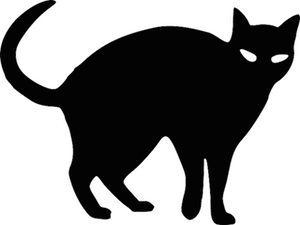
There are lots of accusations of creepy stuff in The Crucible.
The Diary of a Young Girl (Anne Frank)
Anne Frank’s published diary is different from a typical literary work. It’s a true account of the life of one Jewish girl during the Holocaust, and, while Anne Frank wrote some passages with publication in mind, others she did not. When the book was first published, many passages that her father, Otto Frank, found too long, unflattering, or inappropriate were excluded. Today, the book is available with all material included. Gaining some understanding of this horrific genocide is crucial to students.
Fahrenheit 451 (Ray Bradbury)
Books are on trial in this astounding work by Ray Bradbury. Set in yet another dystopian future where firemen are employed to burn books and the houses that contain them, Fahrenheit 451 tells the story of a fireman who begins to wonder what books have to offer. This novel is an ode to literacy, and, while it has its tragic moments, it ultimately leaves readers with a message of hope.
Flowers for Algernon (Daniel Keyes)
Daniel Keyes writes a very warm and human form of science fiction in Flowers for Algernon . The novel tells the story of a man considered mentally retarded who is selected for an intelligence-enhancing surgery. The book follows the effects, both positive and negative, that come from the sudden change in his I.Q. This is a moving read for students who wish to understand how intelligence plays into our humanity.
For Colored Girls Who Have Considered Suicide When the Rainbow is Enuf (Ntozake Shange)
In For Colored Girls… , Ntozake Shange creates choreopoetry (poetry meant to be performed with movement and dance) that covers important themes of race, gender, abuse, and perseverance. It’s largely a deep and dark poem, but it contains a message of hope. This is an awesome opportunity for readers to get exposure to poetry in a very relevant and theatrical form.

The rainbow contains all sorts of symbolism.
Frankenstein (Mary Shelley)
First off, let’s all be clear: as some will already know, Frankenstein is not a monster. Rather, the very human Victor Frankenstein is responsible for creating what we recognize as the monster from the story; the creature itself is nameless. Mary Shelley wrote this Gothic thriller in the early 1800s, and yet we remain fascinated by this tale of playing God and facing the consequences. It’s an eerie tale with themes that run deep.
The Grapes of Wrath (John Steinbeck)
John Steinbeck’s masterful The Grapes of Wrath centers around the Great Depression and the Dust Bowl in American history. It’s a story of hope and despair, moving from one to the other and back again seamlessly throughout the novel. While loaded with biblical allusions, it is not heavy-handed with them, and the writing is often praised as realistic and beautiful.
Great Expectations (Charles Dickens)
Great Expectations , by Charles Dickens, is a staple of English literature. It’s one of his most autobiographical works; it tells the story of a young boy, orphaned and poor, who ultimately experiences a drastic change in his fortunes. In addition, he learns much about love, trust, and relationships in this coming-of-age novel. As the title suggests, the novel also contains discussions of hope, disappointment, and expectations.
The Great Gatbsy (F. Scott Fitzgerald)
F. Scott Fitzgerald wrote in The Great Gatsby a novel that in many ways closely reflected his own experience. The decadence of the Jazz Age was, as is revealed in the novel, both enticing for many and revolting for some. The Great Gatsby follows the quest of a wealthy young man to win back the love of his life by extravagant displays of riches and social connections. As the plot builds to its climax, readers, along with Gatsby's simpler, humbler friend and neighbor, are left to ponder the passing of an era in American history.
BONUS: Reading The Great Gatsby for school but finding it hard to keep track of all the characters? We have several study guides that might be able to help, including our guide to all the characters in The Great Gatsby .
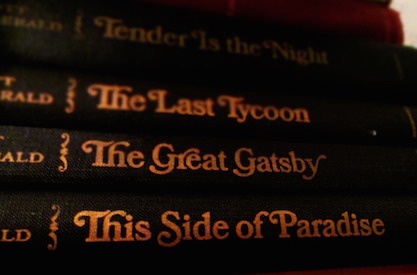
The Joy Luck Club (Amy Tan)
Amy Tan’s novel, The Joy Luck Club , deals with intergenerational and intercultural questions. Tan seeks to represent the Chinese-American experience while also representing issues of mother-daughter relationships and the passage of time. The book focuses on four mother and four daughters across four sections of the novel for a total of sixteen stories that come together to complete this total work.
Lord of the Flies (William Golding)
William Golding’s Lord of the Flies speaks to the evil and degenerate potential that lurks within each human. It can be interpreted religiously, politically, psychoanalytically, or any number of other ways, but the basic premise is that a group of schoolboys stranded on an island descend into grotesque savagery. It’s a disturbing story, to be sure, but one that is important to be familiar with in a world where savage instinct too often presents itself today.
The Lord of the Rings and The Hobbit (J. R. R. Tolkien)
As with any work, The Lord of the Rings and The Hobbit are not everyone’s cup of tea, but they’re hugely rewarding pleasure reading for too many fans to count. Tolkien’s masterpieces are more than just pleasure reading, though; the trilogy covers major themes of the epic struggle between good and evil, the necessity of persevering through immensely difficult ordeals, and how to apply mercy. Tolkien asks major questions about those who are evil versus those who are misguided and what we should do when our paths intertwine with any such individuals. The Hobbit is lighter and more kid-focused, but still addresses important themes.
The Odyssey (Homer)
The Odyssey is an epic poem nearly three thousand years old that’s attributed to the blind poet Homer. It tells the story of a war hero’s ten-year quest to return to his home, wife, and son. He encounters a number of varied setbacks along the way, and the trouble isn’t over when he gets home. The Odyssey deals with human interactions with the gods, bringing up questions of righteousness, wrongdoing, and pride as well as ideas of faithfulness and patience.
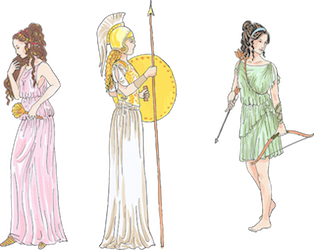
Oedipus Rex (Sophocles)
This play by Greek dramatist Sophocles is about a man who inadvertently kills his father and marries his mother. It’s dark subject matter, and nothing good comes of it, as you may well suspect. This another example, as in The Odyssey , of the divine tinkering with human lives and the great sin of pride.
One Flew Over the Cuckoo's Nest (Ken Kesey)
Ken Kesey documents in this work the darkest side of mental health care as it existed in the 1960s. While certainly not all mental health care was like what’s described in the book, nor is it all like that today, audiences of the novel are aghast that any care might even vaguely resemble the horrors discussed. Despite how disturbing the storyline is, it’s important for readers to recognize the vulnerability of this too often overlooked segment of society.
Pride and Prejudice (Jane Austen)
Jane Austen’s Pride and Prejudice follows a family with five daughters, all unwed, and all, due to English customs of the late 1700s and early 1800s, in need of wedding. Of the five daughters, Elizabeth is the focus of the novel, though the others are discussed aplenty. While marriage is one of the central ideas in the novel, there are plenty of other themes to be picked apart, including ones that touch on pride, prejudice, first impressions, love, misunderstanding, and manipulation. This is, all around, a classic piece of literature, and one with which to be familiar.

Next up: one of my favorites, William Shakespeare.
Romeo and Juliet or Hamlet (William Shakespeare)
William Shakespeare’s Romeo and Juliet is familiar to most people on some level: two teenagers from feuding families fall in love and ultimately sacrifice their lives to their passion. Of all of Shakespeare’s works, it's a particularly popular one to read in high school for a variety of reasons. For one thing, it deals explicitly with teenaged love, and, for another, it’s a relatively simple plot that’s nonetheless action-packed. It also opens with a shameless series of very witty dirty jokes, and such humor is scattered throughout the rest of the show. Then there’s the thematic material, which includes obedience, fate, and rash decisions, among others.
For those who don’t wish to read about teenagers mooning for each other to the point of suicide, there’s always Hamlet . This story follows a Danish prince whose father has died and whose mother has almost instantly married the father’s brother. When Hamlet discovers, via an appearance of his father’s ghost, that his uncle murdered his father, all sorts of interesting events ensue. There’s madness (real and feigned), murder, suicide, treason, and a lot of waffling over the right course of action.
As an added bonus, those who read Hamlet may wish to read Tom Stoppard’s Rosencrantz and Guildenstern Are Dead . It follows the events of Hamlet from the perspective of two minor and typically much-maligned characters. It’s also hilarious, if absolutely weird.
Slaughterhouse-Five (Kurt Vonnegut)
Slaughterhouse-Five is a fictional account of events in some ways very similar to what the author himself experienced as a prisoner of war in WWII. He writes about the atrocities humans commit upon each other, and he also mixes in a number of other concerns, some heavy, some light, such as death, aliens, and the ability to see other points in time, past or future.
Their Eyes Were Watching God (Zora Neale Hurston)
The novel Their Eyes Were Watching God by Zora Neale Hurston has been much criticized over the course of its history, and yet it stands as one of the great classics of American literature. It tells the story of a black woman who is full of zest and passion and who is passed from man to man as she goes through life. With her first husband, she is absolutely miserable; with her second husband, it’s more bearable, for a time; and with her third man, she finds happiness. The trials and tribulations she undergoes with all three make for an interesting examination of what it takes for Janie to free the strong, confident woman within.

(Not an actual representation of Janie. Same approach to life, though.)
Things Fall Apart (Chinua Achebe)
In Chinua Achebe’s Things Fall Apart , readers encounter a complex and beautifully rendered examination of life with the Igbo tribe in Africa, both before and after the white man’s interference. Okonkwo is the protagonist, and he goes through a number of difficulties that put him in the position of making distasteful decisions. Readers are left to wonder whether things are falling apart because that’s simply the way of the world or whether different decisions could have kept them together. The inevitability of change is neatly demonstrated.
To Kill A Mockingbird (Harper Lee)
Harper Lee’s To Kill a Mockingbird deals with elements of racism, courage, sympathy, understanding, and hope. It tells the story of a small town where a black man has been falsely accused of raping a white woman. The daughter of the lawyer defending the accused is the main protagonist, and another aspect of the story is her journey from bemused mockery to gentle understanding with regard to an eccentric man in the town. To Kill a Mockingbird rose to prominence during the Civil Rights Movement and remains as potent today as it ever was.
The Ugly American (Eugene Burdick and William Lederer)
The Ugly American by Burdick and Lederer is a denouncement of the American practice of sending insensitive diplomatic figures into foreign countries. Through a series of vignettes, it demonstrates American inefficiency overseas. It so impressed John F. Kennedy while he was a Democratic senator that he sent a copy to each and every one of his Senate colleagues. It can be an uncomfortable read, but a worthwhile one.
If you can read through these 30-odd books before you graduate high school, you'll be in a good shape, from a literary perspective.
Even if you can't read all of them, picking a few would not be a bad place to start. You might start with those that simply sound the most interesting to you, or you could look for themes in the books that relate to what you're learning in school. If you're studying McCarthyism, for instance, maybe try The Crucible ; if you're studying the Holocaust, maybe try The Diary of a Young Girl .
These stories are immensely powerful. Some are newer, having instantly won their place in the pantheon of classics, while others have proven themselves by withstanding the test of time.
Readers will find that they resonate with some books more than others, and that's fine; the point is that all of these books have important messages to communicate, and I encourage readers to be open to finding out what those messages are.
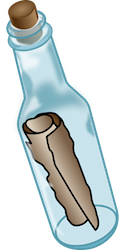
Open a book, and you'll find all sorts of messages! Usually not in bottles, though.
What's Next?
A lot of these books may be read or referenced in AP English Lit classes. Check out our guide to AP Literature for tips on preparing for the exam. If you're not sure whether to take AP English Language or AP English Literature, allow us to provide you with some thoughts on the topic .
While we're on the topic of literature, why don't you take a moment to read some recommendations on which English classes you should take during your high school career?
Are you both a reader and interested in becoming a doctor ? Then you should definitely take a look at our list of books to read as a pre-med student .
And as a reminder, if you decide to read The Great Gatsby or The Crucible , you can check out our analyses of each to help you along the way!

Vero is a firsthand expert at standardized testing and the college application process. Though neither parent had graduated high school, and test prep was out of the question, she scored in the 99th percentile on both the SAT and ACT, taking each test only once. She attended Dartmouth, graduating as salutatorian of 2013. She later worked as a professional tutor. She has a great passion for the arts, especially theater.
Ask a Question Below
Have any questions about this article or other topics? Ask below and we'll reply!
Improve With Our Famous Guides
- For All Students
The 5 Strategies You Must Be Using to Improve 160+ SAT Points
How to Get a Perfect 1600, by a Perfect Scorer
Series: How to Get 800 on Each SAT Section:
Score 800 on SAT Math
Score 800 on SAT Reading
Score 800 on SAT Writing
Series: How to Get to 600 on Each SAT Section:
Score 600 on SAT Math
Score 600 on SAT Reading
Score 600 on SAT Writing
Free Complete Official SAT Practice Tests
What SAT Target Score Should You Be Aiming For?
15 Strategies to Improve Your SAT Essay
The 5 Strategies You Must Be Using to Improve 4+ ACT Points
How to Get a Perfect 36 ACT, by a Perfect Scorer
Series: How to Get 36 on Each ACT Section:
36 on ACT English
36 on ACT Math
36 on ACT Reading
36 on ACT Science
Series: How to Get to 24 on Each ACT Section:
24 on ACT English
24 on ACT Math
24 on ACT Reading
24 on ACT Science
What ACT target score should you be aiming for?
ACT Vocabulary You Must Know
ACT Writing: 15 Tips to Raise Your Essay Score
How to Get Into Harvard and the Ivy League
How to Get a Perfect 4.0 GPA
How to Write an Amazing College Essay
What Exactly Are Colleges Looking For?
Is the ACT easier than the SAT? A Comprehensive Guide
Should you retake your SAT or ACT?
When should you take the SAT or ACT?
Stay Informed
Get the latest articles and test prep tips!
Looking for Graduate School Test Prep?
Check out our top-rated graduate blogs here:
GRE Online Prep Blog
GMAT Online Prep Blog
TOEFL Online Prep Blog
Holly R. "I am absolutely overjoyed and cannot thank you enough for helping me!”
Subscribe to our newsletter
150 great articles & essays: interesting articles to read online, life & death, attitude by margaret atwood, this is water by david foster wallace, why go out by sheila heti, after life by joan didion, when things go missing by kathryn schulz, 50 more great articles about life, 25 more great articles about death.

Travel & Adventure
The book by patrick symmes, shipping out by david foster wallace, death of an innocent by jon krakauer, the place to disappear by susan orlean, trapped by aron ralston, 75 more great travel articles, words and writing, on keeping a notebook by joan didion, autobiographical notes by james baldwin, how to talk about books you haven't read by pierre bayard, where do you get your ideas by neil gaiman, everything you need to know about writing by stephen king, 20 more great essays about writing, short memoirs, goodbye to all that by joan didion, seeing by annie dillard, explicit violence by lidia yuknavitch, these precious days by ann patchett, 100 more short memoirs, tennis, trigonometry, tornadoes by david foster wallace, losing religion and finding ecstasy in houston by jia tolentino, a brief history of forever by tavi gevinson, 50 more great articles about growing up, the female body by margaret atwood, the tyranny of the ideal woman by jia tolentino, grand unified theory of female pain by leslie jamison, 50 more great articles about women, revelations about sex by alain de botton, safe-sex lies by meghan daum, my life as a sex object by jessica valenti, sex is a coping mechanism by jill neimark, 50 more great articles about sex.
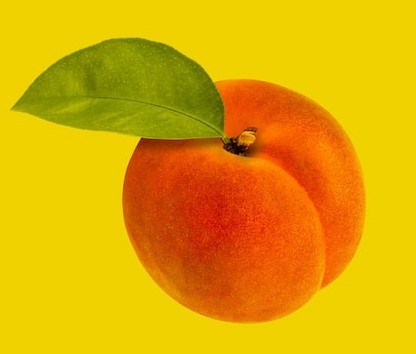
The Women's Movement by Joan Didion
Bad feminist by roxane gay, what the hell am i (and who the hell cares) by neko case, 10 more great articles about feminism, men explain things to me by rebecca solnit, the end of men by hanna rosin, 10 more great articles about men, linguistics/language, who decides what words mean by lane greene, the world’s most efficient languages by john mcwhorter, tense present by david foster wallace, 40 more great articles about linguistics, pigeon wars by jon mooallem, violence of the lambs by john j. sullivan, 25 more great articles about animals, quitting the paint factory by mark slouka, nickel and dimed by barbara ehrenreich, shop class as soul craft by matthew b. crawford, 40 more great articles about work, to have is to owe by david graeber, why does it feel like everyone has more money than you by jen doll, the austerity delusion by paul krugman, the blind side by michael lewis, 25 more great articles about money, science & technology, how life (and death) spring from disorder by philip ball, a compassionate substance by philip ball, your handy postcard-sized guide to statistics by tim harford, on being the right size by j. b. s. haldane, 100 more great science & tech. articles, the environment, the fate of earth by elizabeth kolbert, state of the species by charles c. mann, the real reason humans are the dominant species by justin rowlatt and laurence knight, 30 more great reads about the environment, climate change, losing earth by nathaniel rich, sixty years of climate change warnings by alice bell, beyond catastrophe by david wallace wells, we should fix climate change — but we should not regret it by thomas r. wells, 35 more great climate change articles, the tinkering of robert noyce by tom wolfe, creation myth by malcolm gladwell, mother earth mother board by neal stephenson, i saw the face of god in a semiconductor factory by virginia heffernan, 50 more great articles about computers, the internet, forty years of the internet by oliver burkeman, escape the matrix by virginia heffernan, you are the product by john lanchester, a nation of echo chambers by will leitch, the long tail by chris anderson, 50 more articles about the internet.

Social Media
The machine always wins by richard seymour, my instagram by dayna tortorici, why the past 10 years of american life have been uniquely stupid by jonathan haidt, 15 more articles about social media, m by john sack, blackhawk down by mark bowden, hiroshima by john hersey, the ai-powered, totally autonomous future of war is here by will knight, 35 more great articles about war, the hinge of history by joan didion, how america lost its mind by kurt andersen, the problem with facts by tim harford, constant anxiety won't save the world by julie beck, 75 more great articles about politics, crime & punishment, the caging of america by adam gopnik, the crooked ladder by malcolm gladwell, cruel and unusual punishment by matt taibbi, 20 more great articles about crime, the body in room 348 by mark bowden, the art of the steal by joshua bearman, true crime by david grann, the crypto trap by andy greenberg, 35 more great true crime stories, does it help to know history by adam gopnik, 1491 by charles c. mann, a history of violence by steven pinker, the worst mistake in history by j. diamond, 25 more great articles about history, notes of a native son by james baldwin, how to slowly kill yourself and others in america by kiese laymon, magic actions by tobi haslett, 30 more great essays about race, cities and ambition by paul graham, here is new york by e. b. white, 25 more great articles about cities, we are all confident idiots by david dunning, fantastic beasts and how to rank them by kathryn schulz, the problem with p-values by david colquhoun, what is the monkeysphere by david wong, 100 more great psychology articles, love & relationships, love by lauren slater, masters of love by emily esfahani smith, this is emo by chuck klosterman, 50 more great articles about relationships, what makes us happy by joshua shenk, social connection makes a better brain by emily esfahani smith, the real roots of midlife crisis by jonathan rauch, 20 more great articles about happiness, success & failure, you can do it, baby by leslie garrett, what drives success by amy chua and jed rubenfeld, the fringe benefits of failure, and the importance of imagination by j.k. rowling, 10 more great articles about success, health & medicine, somewhere worse by jia tolentino, race to the vaccine by david heath and gus garcia-roberts, an epidemic of fear by amy wallace the score by atul gawande, 50 more great articles about health, mental health, darkness visible by william styron, the epidemic of mental illness by marcia angell, surviving anxiety by scott stossel, 50 more great articles about mental health, the moral instinct by steven pinker, not nothing by stephen cave, the greatest good by derek thompson, 15 more great articles about ethics, getting in by malcolm gladwell, learning by degrees by rebecca mead, the end of the english major by nathan heller, 20 more great articles about education, the string theory by david foster wallace, the istanbul derby by spencer hall, the kentucky derby is decadent and depraved by hunter s. thompson, 50 more great sports articles, why does music make us feel good by philip ball, one more time by elizabeth margulis, how to be a rock critic by lester bangs, 50 more great music articles, the arts & culture, inhaling the spore by lawrence weschler, death by harry potter by chuck klosterman, a one-man art market by bryan aappleyard, welcome to airspace by kyle chayka, 35 more great articles about the arts, fx porn by david foster wallace, flick chicks by mindy kaling, the movie set that ate itself by michael idov, 15 more great articles about movies, the last meal by michael paterniti, if you knew sushi by nick tosches, consider the lobster by david foster wallace, 50 more great articles about food.

Fear and Loathing in Las Vegas by Hunter S. Thompson
The last american hero is junior johnson. yes by tom wolfe, masters of the universe go to camp by philip weiss, what is glitter by caity weaver.
About The Electric Typewriter We search the net to bring you the best nonfiction, articles, essays and journalism

Tips from my first year - reading
This is the first of a three part series giving advice on the essay writing process, focusing in this case on reading.
Daniel is a first year BA History and Politics student at Magdalen College . He is a disabled student and the first in his immediate family to go to university. Daniel is also a Trustee of Potential Plus UK , a Founding Ambassador and Expert Panel Member for Zero Gravity, and a History Faculty Ambassador. Before coming to university, Daniel studied at a non-selective state school, and was a participant on the UNIQ , Sutton Trust , and Social Mobility Foundation APP Reach programmes, as well as being part of the inaugural Opportunity Oxford cohort. Daniel is passionate about outreach and social mobility and ensuring all students have the best opportunity to succeed.
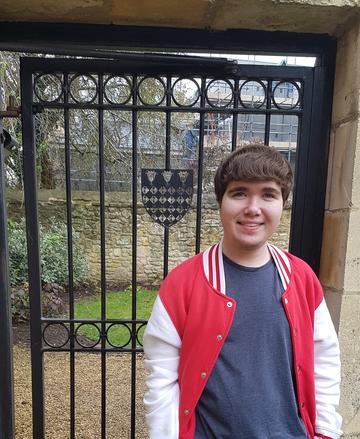
History and its related disciplines mainly rely on essay writing with most term-time work centring on this, so it’s a good idea to be prepared. The blessing of the Oxford system though is you get plenty of opportunity to practice, and your tutors usually provides lots of feedback (both through comments on essays and in tutorials) to help you improve. Here are my tips from my first year as an Oxford Undergraduate:
- Skimming and scanning – when approaching a new reading, have a quick glance through. See if there’s any keywords you recognise or that particularly link to your question focus and try to just get a general idea of what the text says.
- Use the first and last sentences of paragraphs – when put together, these should summarise the key points of the text (also keep this in mind for essay writing). Use this to build a general understanding.
- Don’t hesitate to read it more than once – it can be a good idea to get a general understanding on your first glance over the text, before focusing on particular paragraphs and points which are pertinent or seem interesting.
- Not all readings are as easy to understand as others – don’t worry if you find it challenging to understand what the text is saying as I also sometimes struggle with this! Just try your best to get what you can, as you are really just looking for their viewpoint and possibly a few case studies so don’t be concerned about every detail. Do look into words you don’t know, but if a detail doesn’t seem important to your overall understanding then sometimes it makes sense to just move on.
- Manage your time – undue pressure to read everything is unnecessary and may detract from your focus, but being aware of other texts you need to read is important. If you have got enough information from one text, move on, or even if you are struggling another reading may help you to understand the text later on. You also may have time during the holidays to come back to things, so if a particular text is posing a challenge then it is not a problem to leave it for the time being.
- Look for the argument – at least with the papers I have selected, I am reading to see what interpretation the author(s) have come up with, so make sure to spend your time really understanding that.
On reading lists
- Don’t panic – I know this may seem obvious, but I certainly did panic when I received my first reading list! Unless your tutor has specifically said so, you are not going to be expected to read everything on the reading list, so do not overwhelm yourself.
- Look for indications of priorities – some tutors may star important readings (the more stars, the more important it is), others may underline or put readings in bold, where others may write short summaries of what the readings will cover and what to look out for as well as the best authors to read. Try to take this as a guide when approaching the reading list.
- Journal articles are your friend (are at least in my case they were!) – I really like journal articles to get a general understanding of a topic before moving onto a few book chapters. I find them very succinct as they have to outline their full argument, where book chapters are only snippets of a wider theoretical framework.
- You do not need to read full books – while this may be slightly different to what you are used to (it was in my case), you don’t have the time and you don’t extract enough value out of reading whole books. In my time at Oxford, I’ve only read 3 full books so far, and all of these were during vacations when tutors specifically requested it. My advice is to read the introduction and possibly the conclusion to get a general understanding of the argument before focusing more closely on one or a few book chapters for instance. For reading, it is as much about depth of an issue as breadth in terms of different viewpoints.
- Don’t be afraid to ask for help – sometimes I see reading lists and I am not sure where to start (particularly if I’ve had a busy week with other essays for example,) so make sure to reach out to your tutor if you need a little more guidance. I always advise to have a go yourself first, but at the same time you want to make sure you are using your time efficiently and tutors are there to support you so don’t be afraid to use them as a resource.
- Cover the core themes – usually topics for study will cover a few key themes, so make sure to read on each one so you understand the general bounds of the question. You may not get a chance in an essay to write about all of them, but it helps to know about them all as a theme you didn’t write about may come up in an exam. It also gives you the opportunity in your essay to choose the themes you find most interesting or pertinent to your argument. I always read one text from each theme, and then build from there to ensure I know I have covered the core content. I find it is a good way to ensure I stay focused and relaxed when working on an essay.
- Familiarise yourself with the abstract – papers may come with an abstract, and books come with an introduction so use that to get a general understanding of what they argue. You may not have time to read all you want to for a question, so if you know a journal article or book covers something you end up writing about you can very quickly know where to look, and if you know what they cover it gives you a steer when planning your revision in the holidays.
Summer reading
- Take some time to relax – it is always good to take the holidays to recharge, but particularly the summer holidays before coming to Oxford. Taking time away from work may give you a new perspective – I find leaving something for a little while and then coming back leads me to think of new ideas and allows me to come up with new approaches, so don’t see time away as unproductive. Also I can find Oxford terms quite full-on – it is not all academic work, to the contrary there are so many societies to get involved with among many other opportunities so it is worth conserving your energy!
- Reading what you are interested in is valid – you don’t always get the opportunity to freely explore your interests, so, if you want to, make sure to take vacation time to read what interests you. You never know, it may link to your studies and give a new viewpoint or perspective on future material. It is also good to keep yourself intellectually challenged so you can hit the ground running when you come to Oxford.
- Reading lists are a menu, not a shopping list – unless the reading list clearly states you need to read everything, then you don’t need to worry about reading it. Pick what looks interesting, or challenging, or different, or what sparks your curiosity and see where it takes you. Don’t worry if you don’t cover everything (or anything apart from compulsory reading if you choose) as if you need to read something your tutor will tell you during term, and many of the books I chose to read in summer I have since re-read. Saying that, I did find the pre-reading I chose very helpful, and I feel it set me up well for my first year modules.
- You may not get a reading list at all, or it may come after results day – don’t panic if you don’t have one; if you really want to make a start, don’t hesitate to get in touch with your College to see if they have any suggestions. Your College website or the Faculty website may also be a good port of call first. Equally, rest is so important which I can’t underline enough.
- Get an impression, not the detail – you don’t need to know all of the case studies covered so don’t think you will be grilled on every single line or that you have to learn every book word for word! If you do read, take the time to enjoy it, and just get a general understanding of what happened in the period or what the topic is about.
I hope this will help as a toolkit to get you started, but my last piece of advice is – don’t worry! You get so much practice at Oxford so there’s plenty of opportunity to perfect your reading. Don’t think you need to be amazing at everything straight away. Take your first term to try new methods out and see what works for you – don’t put too much pressure on yourself. Good luck!

- Skip to main content
- Skip to secondary menu
- Skip to primary sidebar
- Skip to footer
2IIM CAT Preparation Blog
The Best CAT Online Coaching
Best Online CAT Coaching
Bharath’s curated reading list for cat exam.

I am Bharathwaj from 2IIM. I have taken 8 CATs in the last 10 years, have been associated with CAT Preparation since 2015. I have managed to score a 99.21 percentile in the Verbal Section of CAT 2019. I attribute my score to Reading from a wide variety of sources and ability to not be under pressure during the exam (having completed an MBA helps in handling pressure, but to know more about my take on how to handle pressure better, head on here ).
What is this CAT Reading List?
This CAT Reading list is created by me, as a result of spending several thousand hours in reading thousands of articles and picking articles that can help a CAT Aspirant in VARC Preparation for CAT, and has about 1000+ articles in this collection. Most of the articles in this list are going to be much longer than your passage that appears in CAT. It is done intentionally to help one retain the understanding from reading an article and not facts. It is a collection of all articles I have shared across since 2018 on a daily basis. This will also get updated as and when I post new articles. We are also planning to have a weekly list of articles.
How to Make use of CAT Reading List?
Bookmark this CAT Reading List page. (press ctrl + D if on a PC, or press the star on the right of the url bar, if on chrome either on mobile or pc). Keep coming back to it on a daily basis. Reading everyday helps tremendously in your CAT Preparation in two ways to start with: 1. Your VARC Prep takes care of itself. 2. You get more time to spend on Quantitative Aptitude and DI LR Sections.
This page provides you with meticulously curated articles to improve your English Comprehension, especially if you are preparing for Management entrance exams such as CAT, XAT, IIFT etc.
Find articles classified broadly under 6 different major categories. Click on the Category button to view collection of hand picked articles under that category. You can also scroll down to find recent articles from each category listed under tabs.
Reading List – This Week

Reading List | This Week | April 3rd Week 2024
April 21, 2024 By Rajesh Leave a Comment
Reading list from 3rd Week of April! In case you have missed any of the articles from last week, check out this post! Read on to Nail CAT VARC!
More Posts from this Category
Categories listed are:
- Technology, Industry and Science ( part 1 50+ articles | part 2 60+ articles)
- Psychology and Philosophy ( part 1 48 articles | part 2 40+ articles)
- Humans and Culture ( part 1 60+ articles| part 2 60+ articles)
- Politics, Law and Crime ( part 1 50+ articles| part 2 20+ articles )
- Economy and Business ( part 1 20+ articles)
- Fiction and Others ( part 1 8 articles)
Share this:
Reader interactions.
March 21, 2020 at 11:39 AM
Please add me in bharat sir curated reading list mail id so that i can get the email whenvever sir posts the new article Thanks.
April 21, 2020 at 5:57 PM
May 26, 2020 at 10:34 AM
could you add average reading time and goal reading time (best to achieve) along with the links? this way we could time ourselves.
May 26, 2020 at 10:29 PM
August 15, 2020 at 10:07 PM
August 16, 2020 at 11:34 AM
Please sir add me for updates related to new article
August 31, 2020 at 12:39 AM
Can I get the regular updates of articles whenever they posted ?? If yes,how??
September 1, 2020 at 12:58 AM
Hi Megha, we have been posting articles almost daily. Visiting https://online.2iim.com/cat-exam/blogs/ daily once is a routine you must definitely consider starting.
September 2, 2020 at 6:25 PM
I am very very thankful to you sir thank you so much for this free material now a days no one gives this much material free thank you so much.. . ??
September 5, 2020 at 11:52 PM
Glad the Reading List if of use, Netra. The articles are carefully curated. A lot of effort goes into picking and choosing the right kind of articles while also keeping in mind diversity in genres and themes. These kinds of positive feedback are really important to us 😀
September 6, 2020 at 10:28 PM
Thank you So much for curating this wonderful list.Feeling so grateful !
September 17, 2020 at 1:53 PM
Like I keep saying, a lot of effort goes into curating this list. The articles are carefully chosen to maintain diversity of topics and ideas, while ensuring they are of the highest standards as well. Happy that you are finding it useful!
September 20, 2020 at 11:04 AM
Sir…is just reading enough?? Or should I make some summary from it??? Which would be better??? Please help me..I am still worried about my VARC scores??? I don’t know how much this could help me…
September 21, 2020 at 12:02 PM
Going to CAT exam on the D-day with 400 to 500 hours worth solid reading is better than anything else. Read vigorously and continuously, even if there are articles or passages that make you feel like you do not understand anything.
April 16, 2021 at 5:58 PM
Thank you so much for this reading list 🙂
April 24, 2021 at 1:40 AM
Exactly sir sometimes I feel just I am reading and reading actually most of the time during reading and I face lots of obstacles to complete the article rather then skip anything I just read it take more than 20 minute to read the whole article about any article what should I do?
May 6, 2021 at 3:25 PM
It is ok to take 20 minutes to read an article. Do not lost hope. Keep reading. Bharath.
August 28, 2021 at 10:48 PM
August 28, 2021 at 10:50 PM
You can follow us on YouTube, Facebook or telegram to get the article delivered daily to your inbox. https://t.me/twoiim
December 29, 2021 at 12:34 PM
Since November 3rd week I couldn’t find Bharath’s reading lists Can you please help me? Or Is there any other way to find it?
December 29, 2021 at 12:39 PM
Hello! We are starting off reading list for cat 2022 in a few days!
Leave a Reply Cancel reply
The heights by great men reached and kept were not attained by sudden flight, but they, while their companions slept, were toiling upward in the night. - Henry Wadsworth Longfellow
Purdue Online Writing Lab Purdue OWL® College of Liberal Arts
Welcome to the Purdue Online Writing Lab

Welcome to the Purdue OWL
This page is brought to you by the OWL at Purdue University. When printing this page, you must include the entire legal notice.
Copyright ©1995-2018 by The Writing Lab & The OWL at Purdue and Purdue University. All rights reserved. This material may not be published, reproduced, broadcast, rewritten, or redistributed without permission. Use of this site constitutes acceptance of our terms and conditions of fair use.
The Online Writing Lab at Purdue University houses writing resources and instructional material, and we provide these as a free service of the Writing Lab at Purdue. Students, members of the community, and users worldwide will find information to assist with many writing projects. Teachers and trainers may use this material for in-class and out-of-class instruction.
The Purdue On-Campus Writing Lab and Purdue Online Writing Lab assist clients in their development as writers—no matter what their skill level—with on-campus consultations, online participation, and community engagement. The Purdue Writing Lab serves the Purdue, West Lafayette, campus and coordinates with local literacy initiatives. The Purdue OWL offers global support through online reference materials and services.
A Message From the Assistant Director of Content Development
The Purdue OWL® is committed to supporting students, instructors, and writers by offering a wide range of resources that are developed and revised with them in mind. To do this, the OWL team is always exploring possibilties for a better design, allowing accessibility and user experience to guide our process. As the OWL undergoes some changes, we welcome your feedback and suggestions by email at any time.
Please don't hesitate to contact us via our contact page if you have any questions or comments.
All the best,
Social Media
Facebook twitter.
Unpacking the Hermit Crab Essay: A Reading List
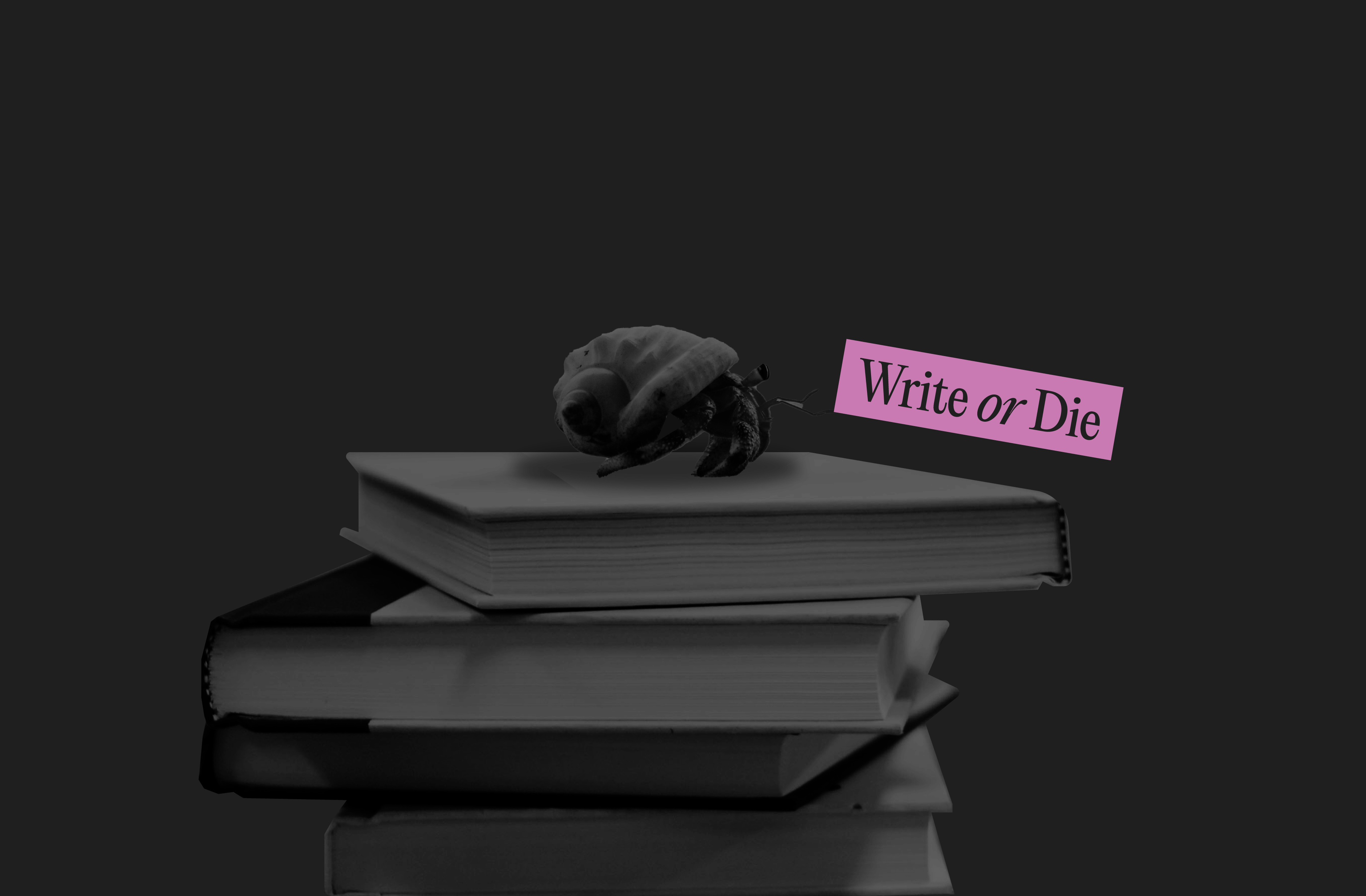
Before I began writing personal essays, I was an academic. My training was in classics and history of medicine, two fields that allowed me to assert my intellectual invulnerability while talking about deeply personal topics—sexuality, mental illness, femininity—within the armor of conference papers, journal articles, book reviews, and a monograph. Close readings of ancient medical texts allowed me to explore in subterranean ways my family history of anorexia. Quotations from early Christian preachers functioned like found text through which I could begin to comprehend how ministers in my childhood churches had warped my passageway into adulthood as a queer person. Footnotes gave me room to skip-jump over sources and scholarship, sliding in comic asides and ironic juxtapositions, to spin the reader around and offer a glimpse of connections that went unexamined in the argument itself.
Perhaps because of this history, I find hermit crab essays fascinating. First named as such by Brenda Miller and Suzanne Paola in Tell It Slant , hermit crab essays steal conventionalized forms (such as math tests, prescriptions, rejection letters, syllabi) as “shells” to contain and protect the material within. The form refines the game I played as a scholar: taking a serious, perhaps even pompous, structure and then teasing it out to examine a question about oneself, one’s relationships and take on the world.
Margot Singer, “On Scaffolding, Hermit Crabs, and the Real False Document” (in Bending Genres: Essays on Creative Nonfiction )
Singer situates hermit crabs in the tradition of using fake documentary evidence, such as newspaper reports in novels. Yet, as she argues, hermit crabs contribute something innovative to how we think about creative nonfiction in particuklar, transforming the essay from a linear string of sentences to a structure such as a house or a room (as in the “stanza”) that the writer and reader might inhabit.
What moved me: The hermit crab essay as a house. Any essay as a house. The way it takes time to settle after a move, to become familiar with which floorboards creak, where precisely the light falls in the morning. The way buildings construct sight-lines and passageways, signal or obscure their contents, change as they pass among inhabitants.
Chelsea Biondolillo, On Shells
A t first sight, “On Shells” is a simple braided essay that intertwines memoir of Biondolillo’s grandmother, who had a passion for beach-combing, with reflections on using the hermit crab essay in creative writing classrooms. Yet, it emerges quickly as a hermit crab essay on the craft of hermit crab essays: through fragmentary paragraphs (broken shells), Biondolillo suggests that we can learn something about writing from the practice of beach-combing. Biondolillo communicates her insights through juxtaposition: what the conchologist says about the hermit crab we can, with the author’s encouragement, apply to our own writing practice.
What moved me: Discovering unique, never-before-seen shells is not the point. Instead, stay alert and curious about what washes up on your own shores.
Suzanne Cope, The Essay as Bouquet
Various writers have offered accounts of what it is in particular that hermit crabs do. A good example is Suzanne Cope’s examination of hermit crab essays that take forms connected to the natural world: she finds that few imitate natural forms; instead, hermit crab essays that brush up against “nature” tend to explore the entanglement of wilderness and human interference.
What moved me: Hermit crab essays as the exploration of breakages and imperfection.
Randon Billings Noble, Consider the Platypus: Four Forms—Maybe—of the Lyric Essay
Each form of the lyric essay t hat Noble discusses—flash, fragmentary, braided, and hermit crab—uses structure to explore its central theme. Hermit crab essays, according to Noble, protect what is vulnerable and contain excess; further, they are social creatures, relying on (literary) networks for their construction of meaning.
What moved me: Hermit crab essays as an exercise in connection.
Susan Mack, The Hermit Crab Essay: Forming a Humorous Take on Dark Memoir
Hermit crab essays are associated with vulnerability, and many are about traumatic experiences. Is this a necessary feature? (Biondolillo, in On Shells , reports being asked this question by her students.) The answer is probably not, although they do lend themselves to difficult material. As Mack explores, hermit crabs not only provide protection but also can be enormously funny. Humor thrives in unexpected juxtapositions, which is the daily fare of the hermit crab form.
What moved me: Hermit crab essays as an opportunity to stop taking myself so damn seriously.
Rich Youman, Haibun & the Hermit Crab: “Borrowing” Prose Forms
Juxtaposition is at the heart of Youman’s exploration of the potential of hermit crab essays within the traditional Japanese form known as the haibun, where prose and haiku work together. As Youman shows, the hermit crab’s borrowed form, which is often documentary or official, can heighten the contrast with the haiku.
What moved me: The in-rush of breath as the haiku brings the glimpse of mundane reality to an abrupt and delicate pause.
Brenda Miller, The Shared Space Between Read and Writer: A Case Study
Hermit crab essays are a useful classroom tool for various reasons: constraints loosen creative inhibitions; the form serves as a disguise, which can support self-conscious writers in sharing vulnerable material; the exercise trains writers to pay attention to how texts are constructed. Telling the story of how she wrote her hermit crab essay We Regret to Inform You while teaching, Miller emphasizes how form dictates content, giving the writer room to experiment.
What moved me: Don’t write the essay and then manipulate it into an unusual form for the sake of gimmick. Instead, find a form that intrigues you and let it shape what you are trying to say.
Kim Adrian (ed.), The Shell Game
Adrian’s introduction to this recent anthology of hermit crab essays mimics an entry in a natural history encyclopedia. Hermit crabs, Adrian writes, are part of a tradition of hybrid forms, but they also reflect current interest in challenging inherited categories and binaries. While they sometimes appear to be a kind of party trick, they are, in another light, the very epitome of the essay—the attempt to express the interior self through the clumsy vessel of writing that so often pretends to be about something else.
What moved me: Hermit crab essays as drag. Just as drag offers overt performances of the deconstruction of traditional gender, so too hermit crab essays perform the deconstruction of the essay, which is at its core (just like gender) a set of conventions that simultaneously enable and constrict self-expression. Hermit crabs as a site for playful experimentation concealing sharp literary critique.
Bonus: Ocean Vuong, Seventh Circle of the Earth
For those curious to see how footnotes might contain a narrative, Vuong’s account of the immolation of two gay men in Texas offers a grim and potent example. As Vuong describes in his introduction to this poem, the very space on the page—the absence of text to which footnotes might be appended—is key to its meaning.
What moved me: The space that the footnotes leave behind, the breathlessness in it, the suspension of thought.
About the author
Jessica Wright
Jessica Wright is a historian and writer based in West Yorkshire. Her work has been published in journals such as Michigan Quarterly Review, Queerlings Magazine, Foglifter Journal, and Mslexia. Her first book, The Care of the Brain in Early Christianity , came out with University of California Press in 2022.
Reading is Good Habit for Students and Children
500+ words essay on reading is good habit.
Reading is a very good habit that one needs to develop in life. Good books can inform you, enlighten you and lead you in the right direction. There is no better companion than a good book. Reading is important because it is good for your overall well-being. Once you start reading, you experience a whole new world. When you start loving the habit of reading you eventually get addicted to it. Reading develops language skills and vocabulary. Reading books is also a way to relax and reduce stress. It is important to read a good book at least for a few minutes each day to stretch the brain muscles for healthy functioning.

Benefits of Reading
Books really are your best friends as you can rely on them when you are bored, upset, depressed, lonely or annoyed. They will accompany you anytime you want them and enhance your mood. They share with you information and knowledge any time you need. Good books always guide you to the correct path in life. Following are the benefits of reading –
Self Improvement: Reading helps you develop positive thinking. Reading is important because it develops your mind and gives you excessive knowledge and lessons of life. It helps you understand the world around you better. It keeps your mind active and enhances your creative ability.
Communication Skills: Reading improves your vocabulary and develops your communication skills. It helps you learn how to use your language creatively. Not only does it improve your communication but it also makes you a better writer. Good communication is important in every aspect of life.
Get the huge list of more than 500 Essay Topics and Ideas
Increases Knowledge: Books enable you to have a glimpse into cultures, traditions, arts, history, geography, health, psychology and several other subjects and aspects of life. You get an amazing amount of knowledge and information from books.
Reduces Stress: Reading a good book takes you in a new world and helps you relieve your day to day stress. It has several positive effects on your mind, body, and soul. It stimulates your brain muscles and keeps your brain healthy and strong.
Great Pleasure: When I read a book, I read it for pleasure. I just indulge myself in reading and experience a whole new world. Once I start reading a book I get so captivated I never want to leave it until I finish. It always gives a lot of pleasure to read a good book and cherish it for a lifetime.
Boosts your Imagination and Creativity: Reading takes you to the world of imagination and enhances your creativity. Reading helps you explore life from different perspectives. While you read books you are building new and creative thoughts, images and opinions in your mind. It makes you think creatively, fantasize and use your imagination.
Develops your Analytical Skills: By active reading, you explore several aspects of life. It involves questioning what you read. It helps you develop your thoughts and express your opinions. New ideas and thoughts pop up in your mind by active reading. It stimulates and develops your brain and gives you a new perspective.
Reduces Boredom: Journeys for long hours or a long vacation from work can be pretty boring in spite of all the social sites. Books come in handy and release you from boredom.
Read Different Stages of Reading here.
The habit of reading is one of the best qualities that a person can possess. Books are known to be your best friend for a reason. So it is very important to develop a good reading habit. We must all read on a daily basis for at least 30 minutes to enjoy the sweet fruits of reading. It is a great pleasure to sit in a quiet place and enjoy reading. Reading a good book is the most enjoyable experience one can have.
Customize your course in 30 seconds
Which class are you in.

- Travelling Essay
- Picnic Essay
- Our Country Essay
- My Parents Essay
- Essay on Favourite Personality
- Essay on Memorable Day of My Life
- Essay on Knowledge is Power
- Essay on Gurpurab
- Essay on My Favourite Season
- Essay on Types of Sports
Leave a Reply Cancel reply
Your email address will not be published. Required fields are marked *
Download the App


- Board of Directors
- Board of Governors
- The Marine Corps Association App
- Battle Study Packages
- TDG Collection Index
- Article Collections
- MCA Scuttlebutt
- “There I was…” Book Reviews
- Legacy Collections
- Modern Day Marine
- Premium Membership
- Associate Membership
- Active/Reserve Marine
- Leatherneck – Magazine of the Marines
- Marine Corps Gazette
- Leatherneck and Gazette Archive
- Advertising
- The MARINE Shop

Defending America in the Future of High-Tech Warfare
by Christian Brose
Buy it Here
For generations of Americans, our country has been the world’s dominant military power. How the US military fights, and the systems and weapons that it fights with, have been uncontested. That old reality, however, is rapidly deteriorating. America’s traditional sources of power are eroding amid the emergence of new technologies and the growing military threat posed by rivals such as China. America is at grave risk of losing a future war.
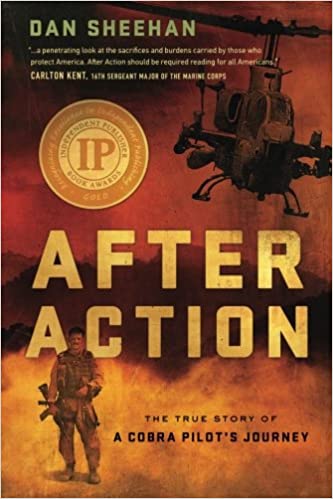
Discussion Guide
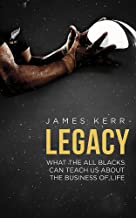
Foundational CPRL Titles can be found here
Discussion guides.
CPRL Discussion Guide
The Leader’s Bookshelf Study Guide
Legacy: 15 Lessons in Leadership Study Guide
MCDP 1 Warfighting Study Guide
Constitution of the United States Study Guide
The Book Review’s Best Books Since 2000
Looking for your next great read? We’ve got 3,228. Explore the best fiction and nonfiction fiction nonfiction Short stories Historical fiction Poetry Thrillers Science fiction Mysteries Experimental fiction Horror Speculative fiction Satire Fantasy Romance Graphic novels Climate fiction Fiction Anthologies History Biographies Memoirs Science Narrative nonfiction Essays Investigative reporting Music Religion Sociology Politics True crime Sports Travel Art Letters Philosophy Food Media Current Events Climate change Nonfiction Anthologies from 2000 – 2023 2023 2022 2021 2020 2019 2018 2017 2016 2015 2014 2013 2012 2011 2010 2009 2008 2007 2006 2005 2004 2003 2002 2001 2000 chosen by our editors.
The 10 Best Books of 2023

Notable Books of 2023

You’ve just seen The Notable Books . See the entire list of best and notable books from every year.
- Share full article
Explore More in Books
Want to know about the best books to read and the latest news start here..
The complicated, generous life of Paul Auster, who died on April 30 , yielded a body of work of staggering scope and variety .
“Real Americans,” a new novel by Rachel Khong , follows three generations of Chinese Americans as they all fight for self-determination in their own way .
“The Chocolate War,” published 50 years ago, became one of the most challenged books in the United States. Its author, Robert Cormier, spent years fighting attempts to ban it .
Joan Didion’s distinctive prose and sharp eye were tuned to an outsider’s frequency, telling us about ourselves in essays that are almost reflexively skeptical. Here are her essential works .
Each week, top authors and critics join the Book Review’s podcast to talk about the latest news in the literary world. Listen here .
Advertisement

How a reading list can shape — or hex — a year
I read somewhere once that all the books you read in your lifetime, in the order that you read them, form an entirely unique text. In a sense this is trivially true — no one eats all the same meals as you, either. But to me this idea is profound, almost a philosophy. We each read our own book, an uber-book. All the millions of words I have looked at, that spectral, unbindable text — it’s not inside me, exactly, but it did pass through me, and only me.
I’ve been keeping annotated lists of every book I finish for almost 10 years. The lists have become a way of living. The first was a whim, just something to do. This, it turns out, is how you follow Rilke’s command — you must change your life by accident. I decided to make the list public , and so I was suddenly accountable for reading in a way I never had been. It was as though I had someone to impress, although the list was almost entirely for myself, to help me remember more of what I read. I began reading to impress myself, to be better than myself.
That year, and in the years that followed, I read more than I ever had. I read to finish more books, so I could put them on the list. I stopped doing things that ate up good time when I could be reading (weeknights, weekend mornings) if they didn’t, in the end, make me happy in the same way as reading. I stopped binge-watching trashy TV shows and going out to see new movies; I stopped going to brunch. I’ve realized that reading makes me happier than many things, and when life gets difficult and complicated, part of what hurts is having less time to read. I started keeping notes on scraps of paper that I stuck in the back of the books, and I underlined great sentences to type up later. Slowly, by typing and rereading these lines, I became the kind of person who can quote lines from memory. I’d always wished I could be that kind of person. I started reading more widely and adventurously, because I wanted the list to be varied, surprising — the list itself was an aesthetic.
In the first days of the year, everything feels auspicious, both choice and coincidence. Any occurrence has magic potential to set a new tone or pattern. So when I start the list each January, I choose my books very deliberately, even superstitiously. It feels like the wrong book might hex the year. By summer the list will get noisy, haphazard, but now, in the cold, the list is blank and open. This fosters a beautiful illusion. A perfect reading year seems possible.
I like to start the year with a classic, or something I’ve been meaning to read for a while, something that’s been repeatedly recommended to me or that I’ve read about in other books — something almost guaranteed to be good, or at the very least interesting to think about. Reading a classic I discover I hate can offer certain pleasures — now that I have my lists, I sometimes finish books I hate, just so I can articulate why I hate them. But I choose those early books in hopes of finding something great. A great book gives me something to measure the rest of the year’s books against. One year I started with Alain-Fournier’s “Le Grand Meaulnes.” One year I started with “The Heat of the Day,” by Elizabeth Bowen. I think I will always remember that I read these in January, and Ivan Turgenev’s “Fathers and Sons” in December. I tend to remember when in the year I read books; their place on the list codes other information, moods and weather.
Last year, the first novel I read was Thomas Hardy’s “Jude the Obscure.” This was a risk — I’m reluctant to begin with a very long book, because I’m uneasy when weeks go by before I finish a book. Until I do finish one, or really, a few, the list does not exist. This seems to threaten the year, which has no identity yet. A year is about 50 weeks, and about 50 books. I’ll read mostly on the couch, but sometimes in bed or at the kitchen table. (I occasionally read while eating, but lately, in midlife, time feels so short I often eat standing up.) I don’t travel very often — books sort of are my travel, the way I leave familiar surroundings — but I’ll read a few a year on trains or on planes. I’ll read a page here and there at an outdoor cafe with my husband, since he likes to read in public, but I’m distracted by reality, faces and voices. If I really want to read, I stay at home, on the couch. I don’t even listen to music.
I feel most myself while reading and writing, and keeping the lists makes reading feel closer to writing. Part of how I recognize that a book is good is that it makes me want to write. When I love what I’m reading, I have an irresistible urge to describe it. I need to tell someone — I need to tell myself — what it’s like . Description is my favorite part of criticism (my reading lists are a kind of minor personal criticism, the lightweight lit crit of diaries), a practice of simply noticing. What is the shape of the book? Are there radical breaks, parts that seem to have been written years apart, as in Yasunari Kawabata’s “Snow Country” or Don Carpenter’s “Hard Rain Falling”? Does the prose race forward, as in W.G. Sebald’s “Vertigo,” or wander slowly, in mazelike circles, as in “The Rings of Saturn” (same author, five years later)? Did it make me laugh — I think all books should be funny, and if not, they better be brilliant — or cry? Only one or two books a year make me cry. Somehow taking the time to work out these phrases, to record these memories of my reading experience in language, helps me carry a book with me longer. It underlines the reading having happened.
I’ve heard that moving gets harder as you age because you have more stuff. (I can’t help but notice you’re also more tired, and weaker!) More important, I think, as years go by you care much more about your stuff. That is its value; not what it cost, but the years. Your stuff holds more of your life in it. Two years ago, we had to move all of our stuff — most of the burden, by weight and complication, was books — a distance of 2,000 miles. Someone advised me to sell all our books and then buy them again, suggesting that would be cheaper and easier. It struck me as madness. So many of our books are irreplaceable — used books, out-of-print books, books we’ve had for years and moved again and again. Different copies of the same book aren’t the same book. Our books have our life in them, our dust and handwriting.
My reading lists have a complex, intimate connection to our library — this lifelong collaborative project, this external mind we continually edit and share. They’re certainly not a direct or exhaustive index; I don’t read everything in our library, not in full, and I read a lot of books I borrow from elsewhere. But they’re a partial index, an incomplete map to the territory.
At this time of year, I pull a few books off the main shelves, our house stacks, and move them to a shelf in our bedroom. This particular shelf is where I keep a few favorite books, books that I look at and reference again and again. (Christopher Alexander’s “A Pattern Language.” My collected Plath.) It’s where I keep borrowed books so I remember to read them before they’re due back, and it’s where I keep a few books I’ve decided it’s finally time to read. This is their year. It’s only a few, because I want lots of room on the list for fate and randomness to enter. But having a to-read pile in view is so hopeful, almost like a promise that the year will happen. Or maybe, in the way of resolutions, it’s more like a wish — that whatever else the year contains, there will be time enough to read.
Elisa Gabbert is the author of six collections of poetry, essays and criticism, including “Normal Distance” and “The Unreality of Memory.”


2024 Summer Reading Lists
Titles on the 2024 Summer Reading Lists were compiled and annotated by members of ALSC’s Quicklists Consulting Committee. ALSC reading lists are created as a resource for children's librarians to share with patrons. Parents and caregivers are encouraged to explore these titles to find resources that may match or spark their child's interest.
Birth - Pre-K PDF
Kindergarten - Grade 2 PDF
Grades 3 - 5 PDF
Grades 6 - 8 PDF
Share This Page

IMAGES
VIDEO
COMMENTS
An Addendum on Poetry. You probably won't be writing about poetry on your student choice essay—most just aren't meaty enough in terms of action and character to merit a full-length essay on the themes when you don't actually have the poem in front of you (a major exception being The Odyssey).That doesn't mean that you shouldn't be reading poetry, though!
Center to ask for help on a paper before reading the prompt. Once they do read the prompt, they often find that it answers many of their questions. When you read the assignment prompt, you should do the following: • Look for action verbs. Verbs like analyze, compare, discuss, explain, make an argument, propose a solution,
11) Catch-22 - Joseph Heller. Catch-22, coming in at 14 appearances on the AP Lit exam, might be my personal favorite on this entire list. It's known as a brutal satire of the American WWII war effort. And it certainly is a satire—a masterful satire. The caricature, the wordplay, the paradox—at a certain point in reading Catch-22, you ...
3. Wuthering Heights by Emily Bronte. Wuthering Heights is one of the most highly regarded pieces on the College Board reading list. A strong example of Gothic Romanticism, it deals heavily with questions of emotion and violence. The language is easier to decipher than most literary works on the AP® reading list.
Amy Long, Codependence. (Cleveland State University Poetry Center) In this haunting and troubling book, Long revisits scenes and anecdotes from her boyfriend's heroin addiction and her subsequent dependence on opioids for chronic pain. Formal experiments such as essays disguised as lists, prescription forms, and medical reports are ...
There isn't time during busy Oxford terms with essays to write, criticism to read, lectures to attend (and any number of other things to do) to be desperately trying to get to the end of Middlemarch! There will be a short test on the Victorian core list in 0th week of Michaelmas, to check that you've done the relevant reading. CORE READING LIST
This guide will suggest ways for you to improve your reading skills and to read in a more focused and selective manner. Reading academic texts (video) Watch this brief video tutorial for more on the topic. Reading academic texts (transcript) Read along while watching the video tutorial. The best file formats and how to use them.
Below is a high school reading list of 25 recommended texts based on what students are most likely to encounter on the SAT and ACT. ... The collection of essays aligns closely with the types of historical essays that students tend to find challenging on the SAT and provides good practice for working through complicated language.
AP English Literature and Composition is an introductory college-level literary analysis course. Students cultivate their understanding of literature through reading and analyzing texts as they explore concepts like character, setting, structure, perspective, figurative language, and literary analysis in the context of literary works.
Table of contents. Step 1: Reading the text and identifying literary devices. Step 2: Coming up with a thesis. Step 3: Writing a title and introduction. Step 4: Writing the body of the essay. Step 5: Writing a conclusion. Other interesting articles.
So below is my list, not of essay collections I think everybody "must read," even if that's what my title says, but collections I hope you will consider checking out if you want to. 1. Against Interpretation — Susan Sontag. 2. Alibis: Essays on Elsewhere — André Aciman. 3. American Romances — Rebecca Brown. 4. Art & Ardor ...
To get a feel for the literature of this period, aim to read a selection of Old and Early Middle English texts in translation before you come to Oxford. Asterisks (*) designate essential reading. Reading widely will help you prepare for the essay section of the exam. Seamus Heaney, Beowulf (London: Faber & Faber, 1999).
Highlight core and additional reading. This is particularly important for lengthy reading lists. Highlighting particularly useful chapters or sections can help students to organise and focus their reading, which is key if students are expected to complete reading during short term-times. Identify topics. Some reading lists may cover a variety ...
Insomniac City: New York, Oliver, and Me by Bill Hayes. "Bill Hayes came to New York City in 2009 with a one-way ticket and only the vaguest idea of how he would get by. But, at forty-eight years old, having spent decades in San Francisco, he craved change.
By reading this work the student gets used to working with real life texts, which is mainly what the free response sources for the synthesis essay will be. 1984. 1984 by George Orwell was a dystopian novel about a man that was trapped in a world where it felt like Big Brother was always watching. The man, Winston, starts a sexual relationship ...
This reading list referenced in the essay is by no means a comprehensive collection of war- and military-related material, but offers a deeper dive into the themes and ideas Klay explores in the ...
Whether you prefer manga or ancient, epic poems, reading is great for all sorts of reasons. What follows is a list of highly beneficial books to read in high school (or after!). These are remarkable books— books that made history, books that challenge societal perceptions of the world, and books that are quite simply interesting and moving.
Misc. Fear and Loathing in Las Vegas by Hunter S. Thompson. The Last American Hero Is Junior Johnson. Yes! by Tom Wolfe. Masters of the Universe Go to Camp by Philip Weiss. What Is Glitter? by Caity Weaver. The best short articles, nonfiction and essays from around the net - interesting articles and essays on every subject, all free to read online.
Tips from my first year - reading. 27 April 2021. This is the first of a three part series giving advice on the essay writing process, focusing in this case on reading. Daniel is a first year BA History and Politics student at Magdalen College. He is a disabled student and the first in his immediate family to go to university.
Reading everyday helps tremendously in your CAT Preparation in two ways to start with: 1. Your VARC Prep takes care of itself. 2. You get more time to spend on Quantitative Aptitude and DI LR Sections. This page provides you with meticulously curated articles to improve your English Comprehension, especially if you are preparing for Management ...
The Online Writing Lab at Purdue University houses writing resources and instructional material, and we provide these as a free service of the Writing Lab at Purdue.
First named as such by Brenda Miller and Suzanne Paola in Tell It Slant, hermit crab essays steal conventionalized forms (such as math tests, prescriptions, rejection letters, syllabi) as "shells" to contain and protect the material within. The form refines the game I played as a scholar: taking a serious, perhaps even pompous, structure ...
500+ Words Essay on Reading is Good Habit. Reading is a very good habit that one needs to develop in life. Good books can inform you, enlighten you and lead you in the right direction. There is no better companion than a good book. Reading is important because it is good for your overall well-being. Once you start reading, you experience a ...
by T. X. Hammes. by Jane Blair. by Bob Drury and Tom Clavin. by Charles Henderson. by Ronald K. Culp. by James D. Hornfischer. by Patrick K. O'Donnell. by James E. Wise Jr. and Scott Baron. Edited by LtCol Merrill L. Bartlett.
See the entire list of best and notable books from every year. Note: Before 2005, the annual list of top books was called Editors' Choice, and there were not always 10. There were also more than ...
Show colleges you're ready. Learn about the SAT Suite of Assessments, which includes the SAT, PSAT/NMSQT, PSAT 10, and PSAT 8/9.
I started reading more widely and adventurously, because I wanted the list to be varied, surprising — the list itself was an aesthetic. In the first days of the year, everything feels auspicious ...
The 2024 Summer Reading Lists are full of book titles and other digital media options to keep children engaged in reading and exploring throughout the summer. Four Summer Reading lists are available for birth-preschool and grades K-2, 3-5 and 6-8. Each list is available here to download for free.